Reform croplands
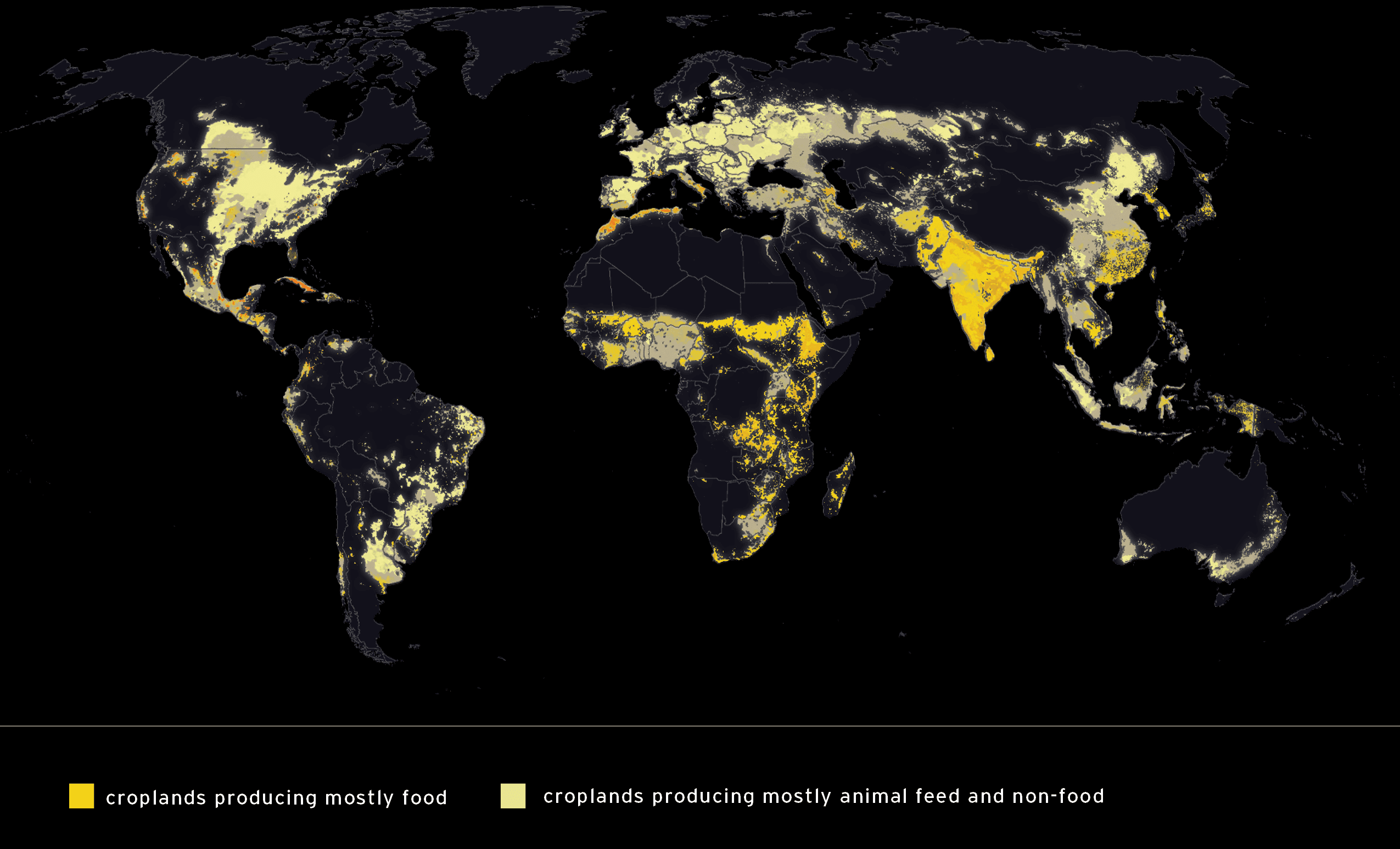
CROPLANDS ACCOUNT FOR 10% OF GLOBAL GREENHOUSE GAS EMISSIONS EACH YEAR AND COVER 13% OF GLOBAL LAND.
LESS THAN 2% OF ALL CROPLAND IS ORGANIC.
Regenerative farming could reduce and absorb 15% of annual greenhouse gas emissions while increasing crop resilience and yields, and improving food security and biodiversity around the world.
Map sources: General Cropland Extent - Ramankutty, N., A.T. Evan, C. Monfreda, and J.A. Foley. 2010. Global Agricultural Lands: Croplands, 2000. SEDAC. | Food vs Feed & Fuel – Foley, J., Ramankutty, N., Brauman, K. et al. Solutions for a cultivated planet. Nature. 2011 | Emissions reductions and offsets potential based on estimates from Project Drawdown, World Resources Institute, Rodale Institute, and The Nature Conservancy and Griscom et al. Natural Climate Solutions. PNAS (2017)
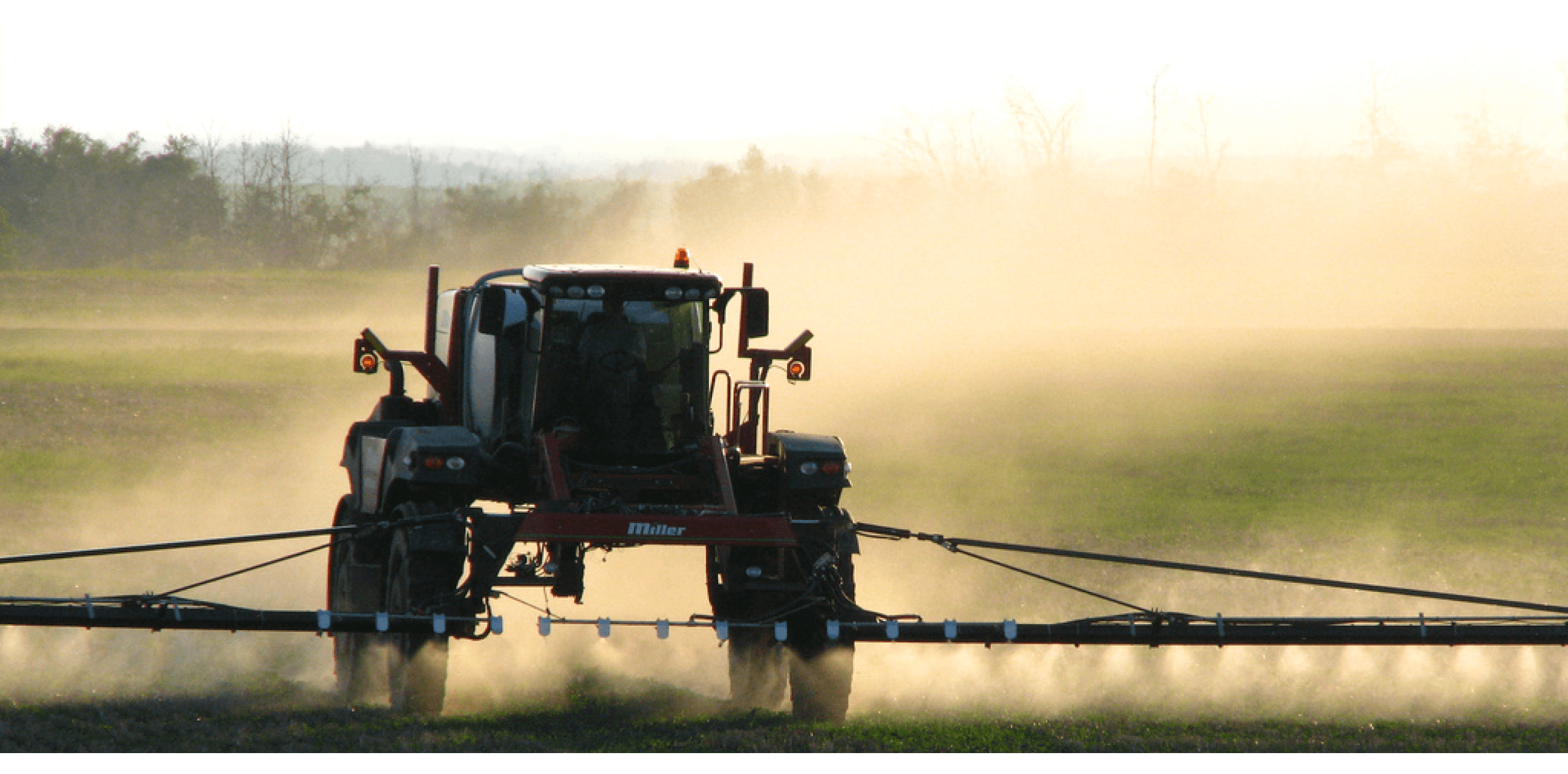
INDUSTRIAL AGRICULTURAL PRACTICES CONFLICT WITH THE CONSERVATION OF BIODIVERSITY AND THE HEALTHY FUNCTIONING OF ECOSYSTEMS.
Heavily subsidized crops dominate our rural landscape, and use “...massive amounts of synthetic fertilizers, herbicides and pesticides, which deplete our soil and pollute our air and water.”
Source: “Food and Agriculture: Real Farms, Real Food” Union for concerned scientists. United Nations. “Food Security and Sustainable Agriculture.” Access 25 June 2015. Toxic Action Center. “Everything You Need to Know About Agicultural Emissions.” World Resource Institute
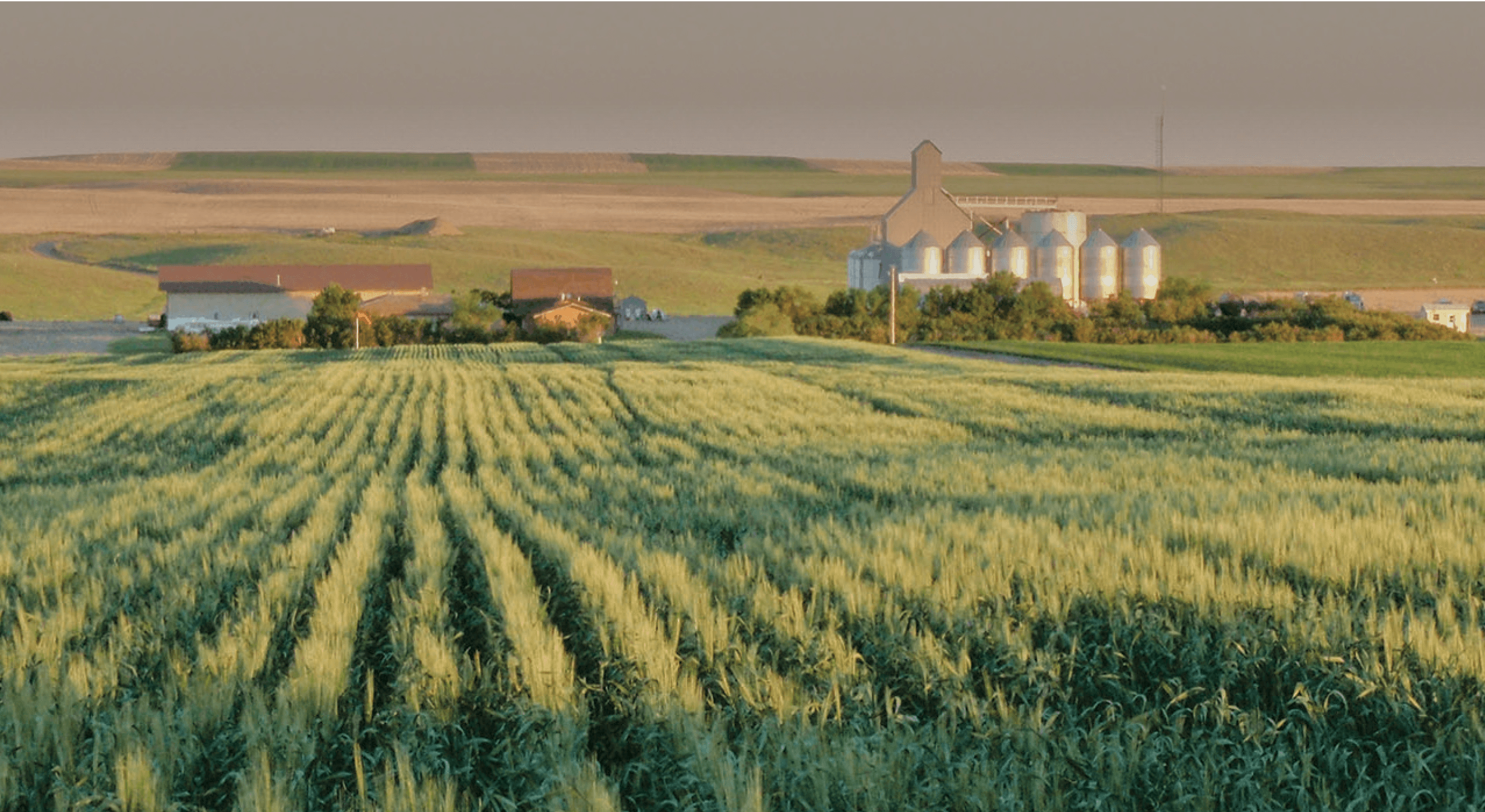
"REGENERATIVE AGRICULTURAL PRACTICES CAN TURN BACK THE CARBON CLOCK, REDUCING ATMOSPHERIC CO2."
Regenerative agriculture builds soil health, crop resilience, above and below ground biodiversity, increases water retention and sequesters carbon -all while increasing food security and resilience against drought.
“Soil as Carbon Storehouse...” Judith Schwartz, Yale Environment 360; “What Is Regenerative Agriculture?” Definition Paper, Regeneration International. 2017.
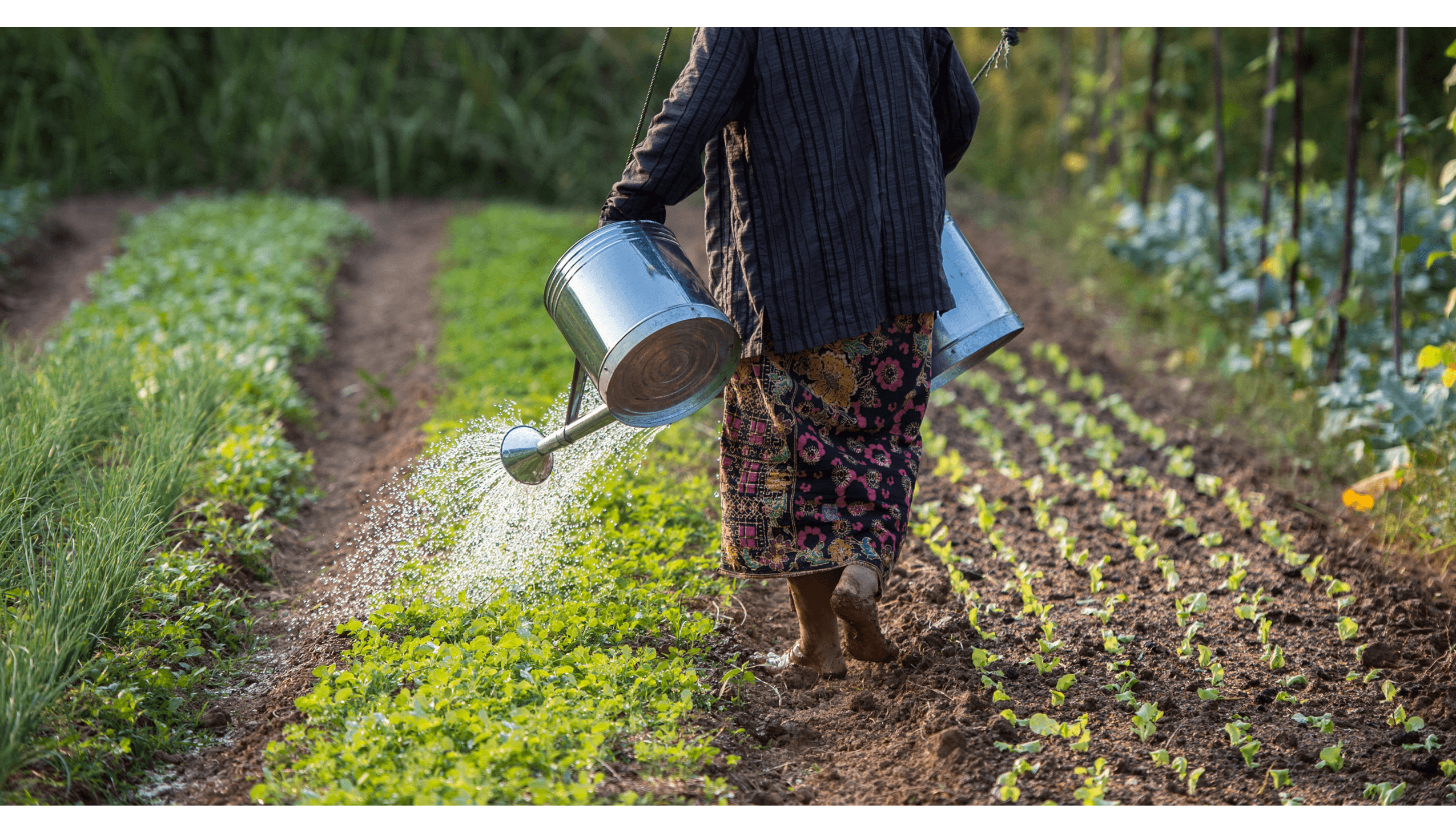
SUPPORTING SUSTAINABLE AGRICULTURAL PRACTICES COULD INCREASE CROP YIELDS UP TO 180%, REDUCE PESTICIDES, AND SAVE WATER.
Using organic techniques like “improving seeds, irrigation, fertilizer use and markets would drive up yield for many crops... Closing this ‘yield gap’ for the top 16 crops worldwide could produce 50 to 60 percent more food” and lower our overall environmental impact.
Source: University of Michigan Department of Ecology & Evolutionary Biology.
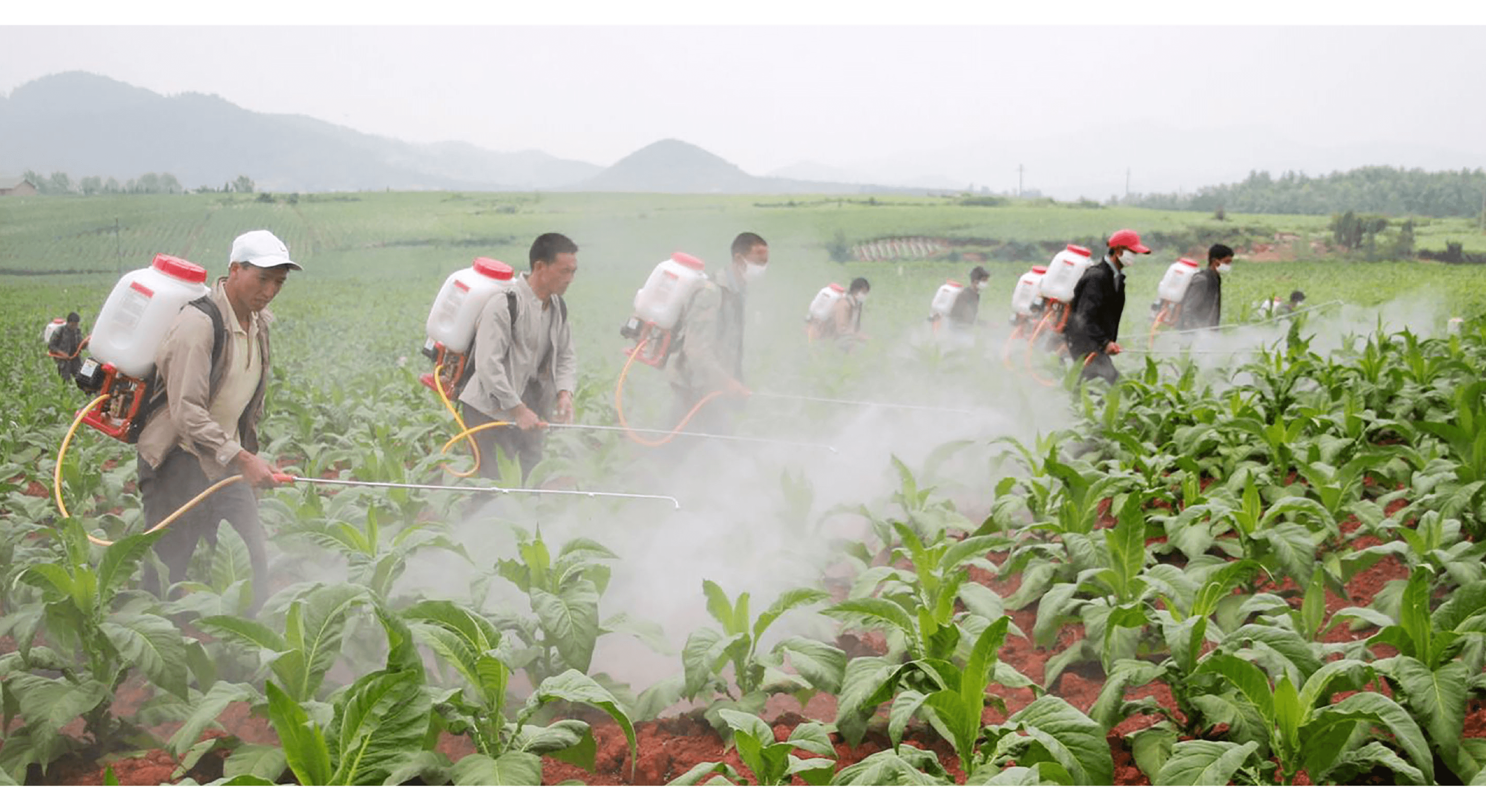
AVOID PESTICIDES
Pesticide residues are found in about 29% of the domestically produced non-organic grain products sampled by the FDA. Pesticide use is not only a threat to the environment and consumers, but also is a direct threat to the 2.8 billion people that are agricultural workers.
Reinagel, Monica MS LDN. “Avoiding Pesticides, Beyond the Dirty Dozen.” European Commission.
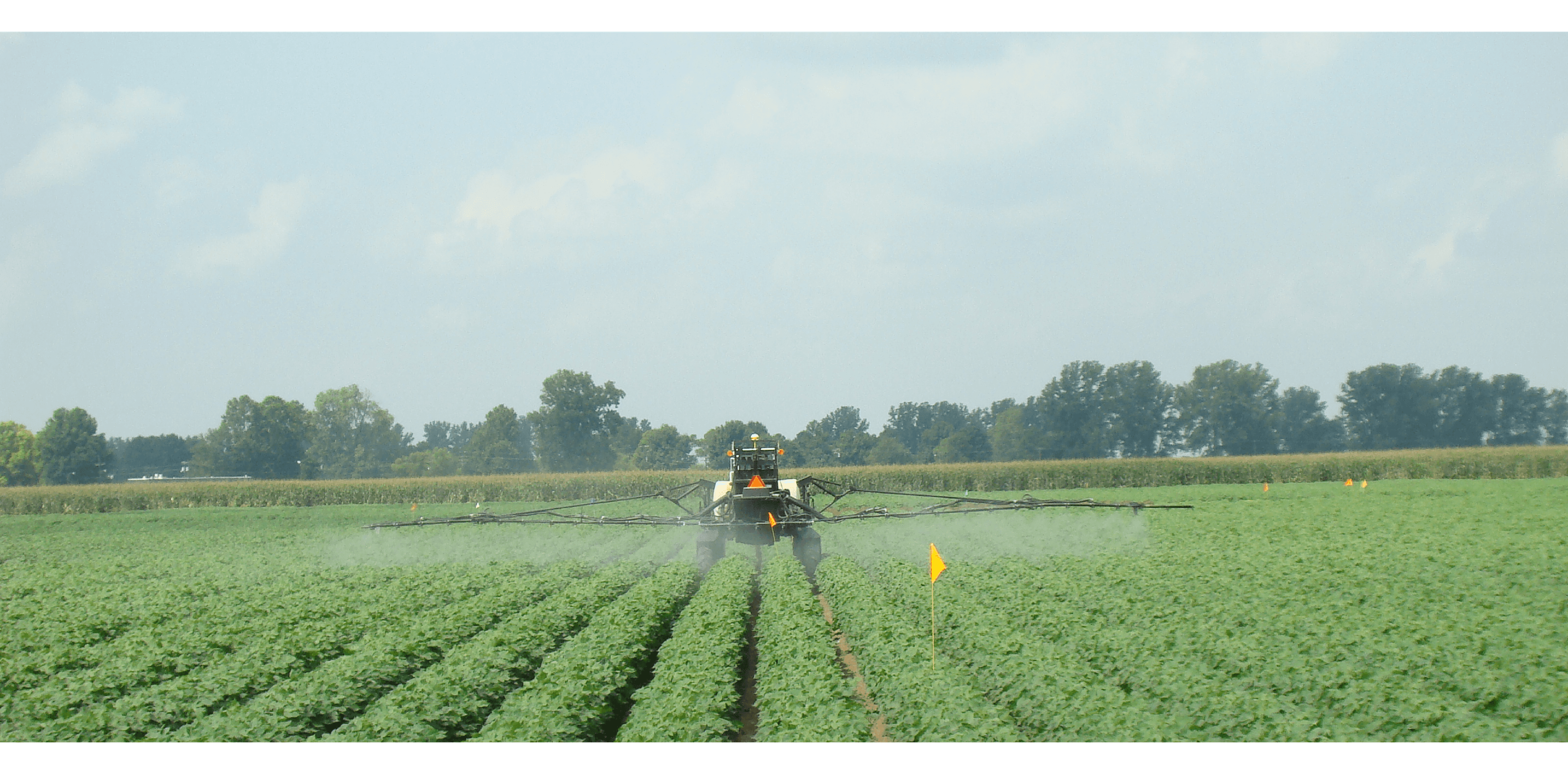
PESTICIDES HAVE BEEN LINKED TO A WIDE RANGE OF HEALTH HAZARDS, INCLUDING CANCER, REPRODUCTIVE HARM, AND ENDOCRINE DISRUPTION.
Researchers at the Mount Sinai School of Medicine found 167 chemicals, pollutants, and pesticides in the blood and urine of nine adult Americans. The subjects contained an average of 91 compounds – most of which did not exist 75 years ago.
Sources: Toxic Action center. EWG.
GLOBAL PESTICIDE USE
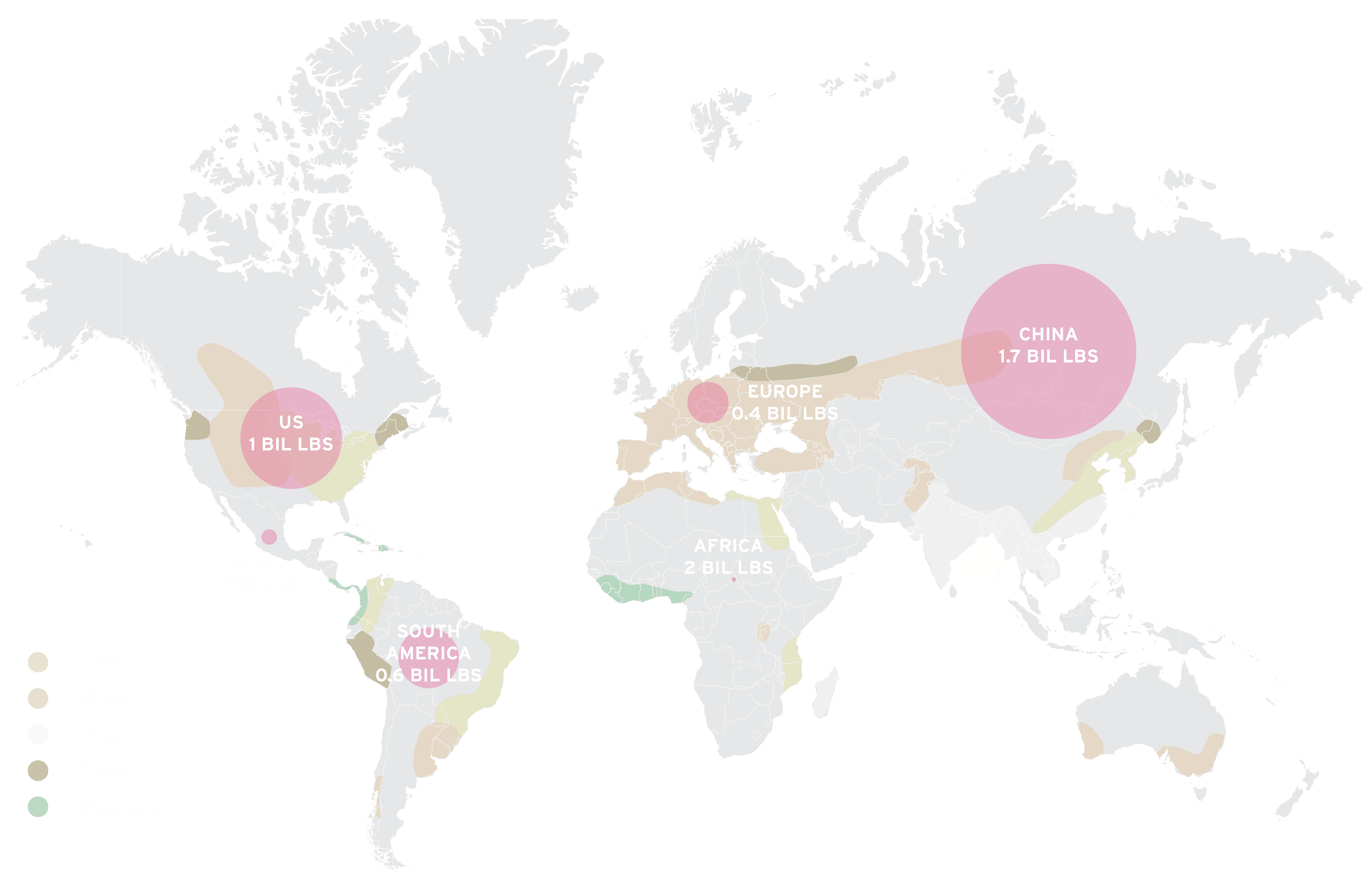
LESS THAN 2% OF GLOBAL CROPLAND IS ORGANIC
Source: Reinagel, Monica MS LDN. “Avoiding Pesticides, Beyond the Dirty Dozen.” Mother Jones.
CROPS WITH THE HIGHEST PESTICIDE USE
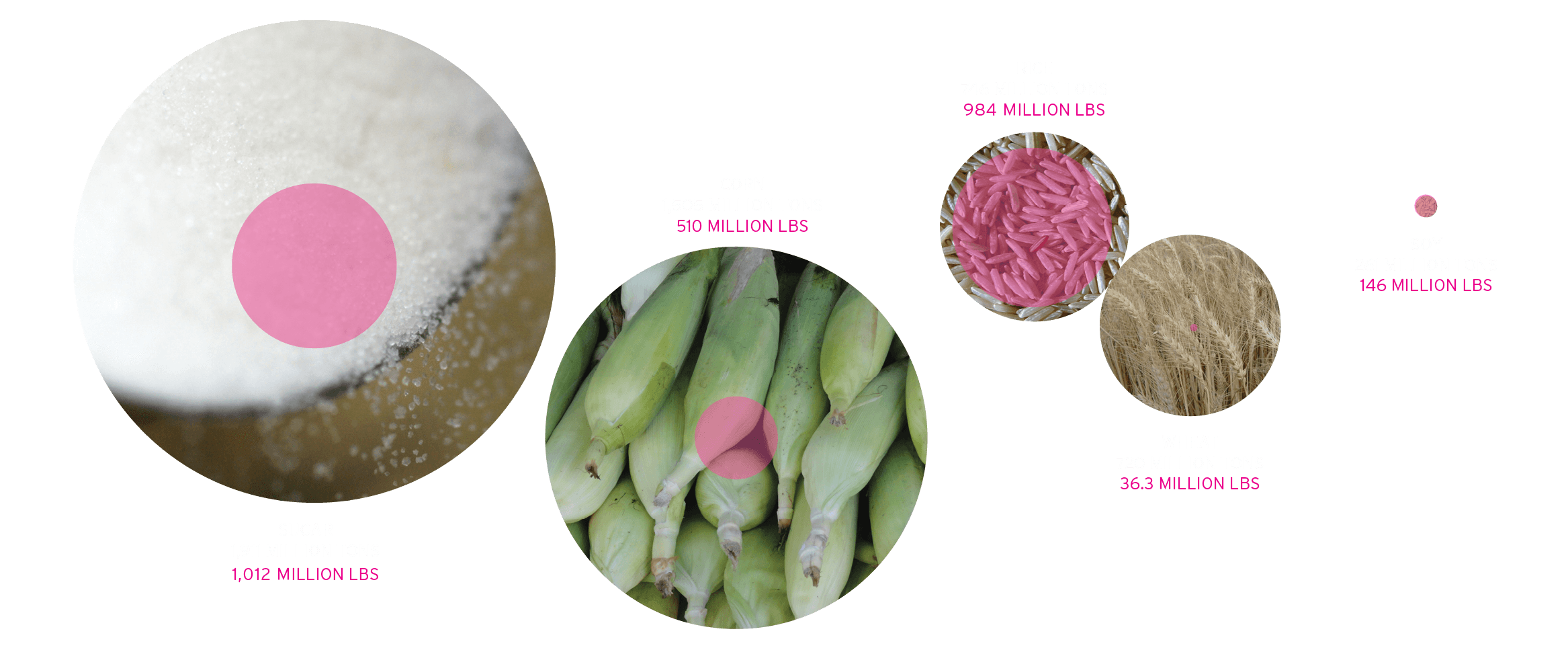
These staples “routinely, and lawfully, contain dangerous amounts of pesticides, which pose an increased risk of cancer, neurobehavioral damage, and other health problems.”
Source: Pesticide Safety Education Program. “Are pesticides posing intolerable risks?” Cornell University. Accessed 25 June 2015. Reinagel, Monica MS LDN. “Avoiding Pesticides, Beyond the Dirty Dozen.” Mother Jones.
Top Crops Grown Worldwide
Production, fertilizers, pesticides, & water use for top crops
"A danger of a more homogeneous global food basket is that it makes agriculture more vulnerable to major threats like drought, insect pests and diseases, which are likely to become worse in many parts of the world as a result of climate change...”
- Luigi Guarino of the Global Crop Diversity Trust. Kinver, Mark. “Crop Diversity Decline ‘Threatens Food Security.’” BBC News. 3 March 2014. FAO.
CORN
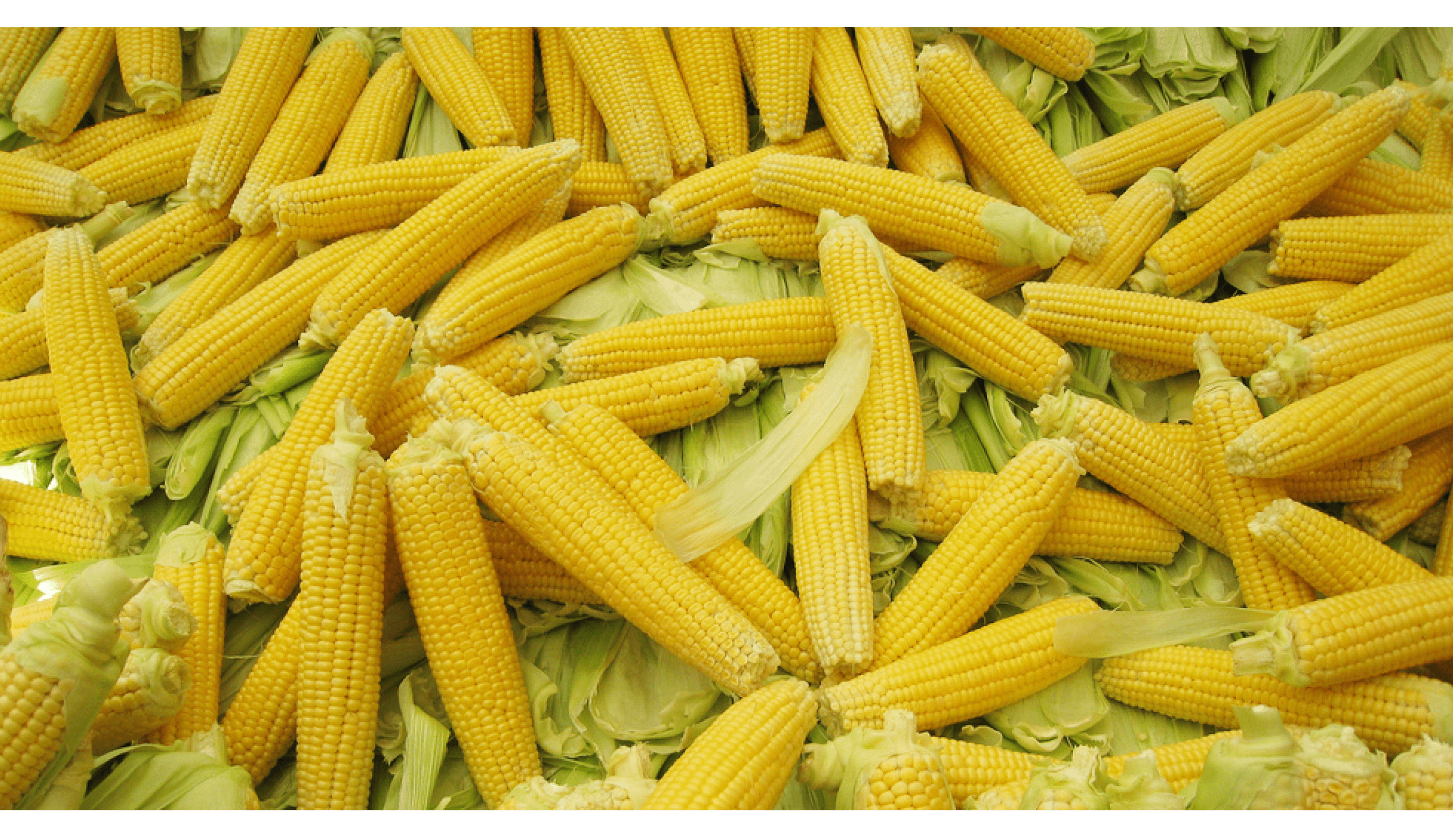
29% OF CORN IS USED FOR ETHANOL PRODUCTION AND 38% IS USED AS FEED FOR LIVESTOCK.
“Corn ethanol, with its especially high input requirements, has done the most to diminish foodstocks: one gas tanks worth of ethanol fuel requires an amount of corn that could feed one person for an entire year. Many question the morality of using food for fuel when other technologies are available to satisfy the demand for energy without contributing to global hunger.”
Source: Climate Institute. “Climate Change & Food Security.” 2008
WHEAT
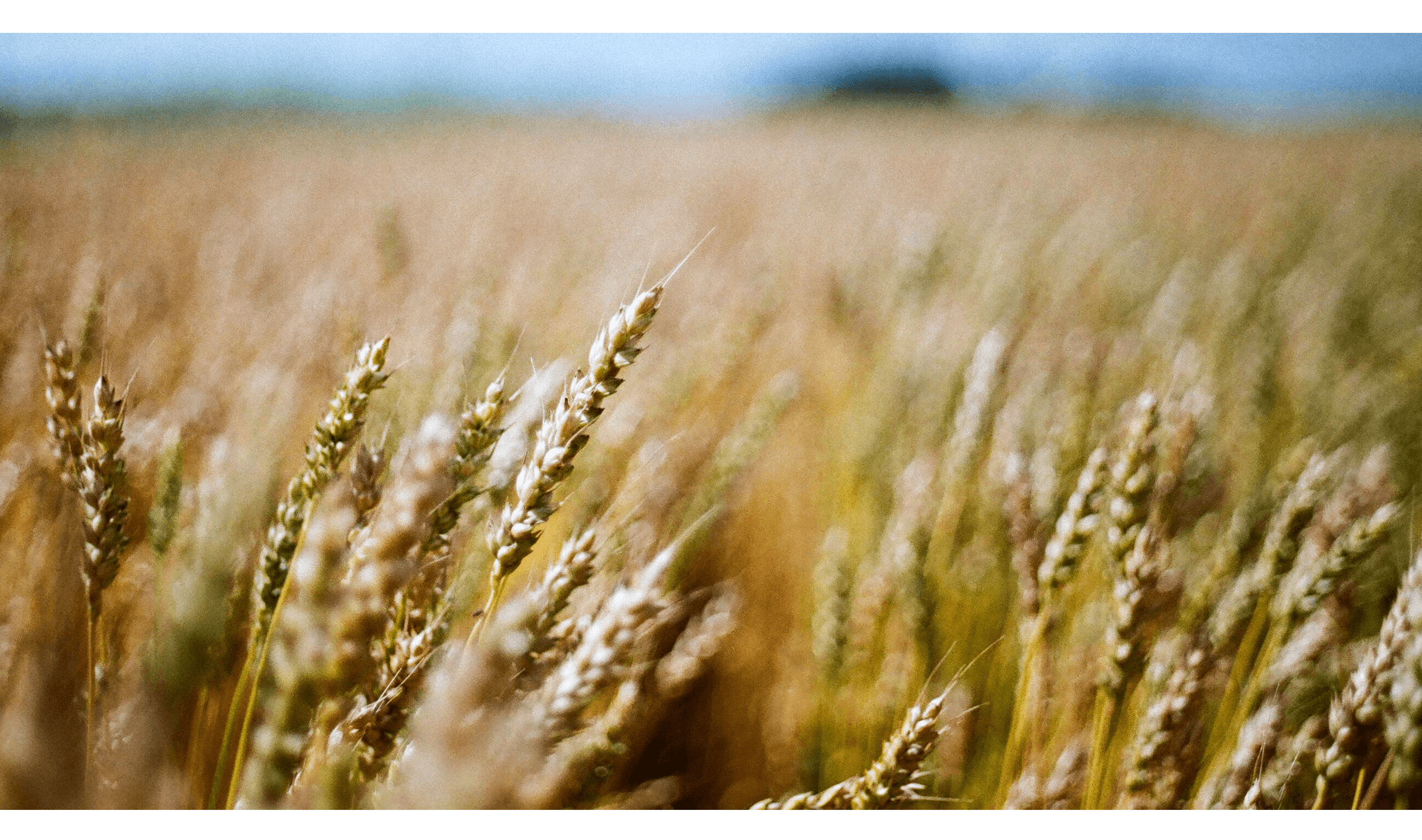
THE LATEST USDA FIGURES SHOW THAT 99% OF DURUM WHEAT, 97% OF SPRING WHEAT, AND 61% OF WINTER WHEAT IS DOUSED IN HERBICIDES PRIOR TO HARVEST.
Gluten intolerance has been linked to the higher residues from the use of glyphosate (trade name Roundup) which farmers are using not only to control weeds but also to dry down crops before harvest.
source: USDA Economic Research Service. http://www.ers.usda.gov/data-products/organic-production/documentation.aspx. Global Research.
RICE
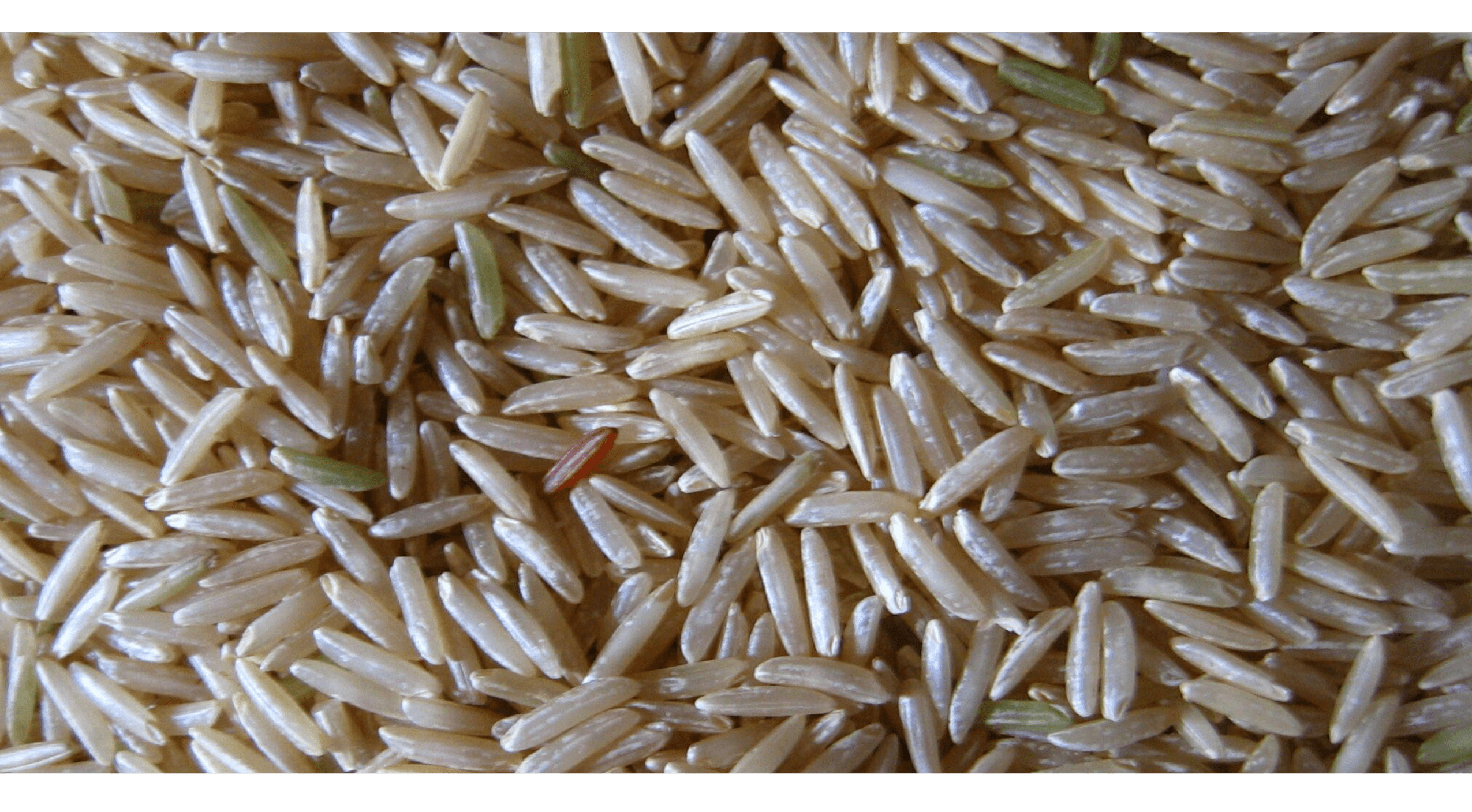
MORE PESTICIDES ARE USED IN RICE CULTIVATION PER ACRE THAN IN ANY OTHER STAPLE FOOD.
An average of 0.26 micrograms of arsenic is found in each gram of U.S. rice. Arsenic is taken into the rice from the soil, through the roots of the plant. The contamination is a legacy of cotton farming, which relies on arsenic- based chemicals. A lot of land that previously grew cotton is now used for rice cultivation.
source: Peplow, M. US rice may carry an arsenic burden. Nature (2005).
OATS
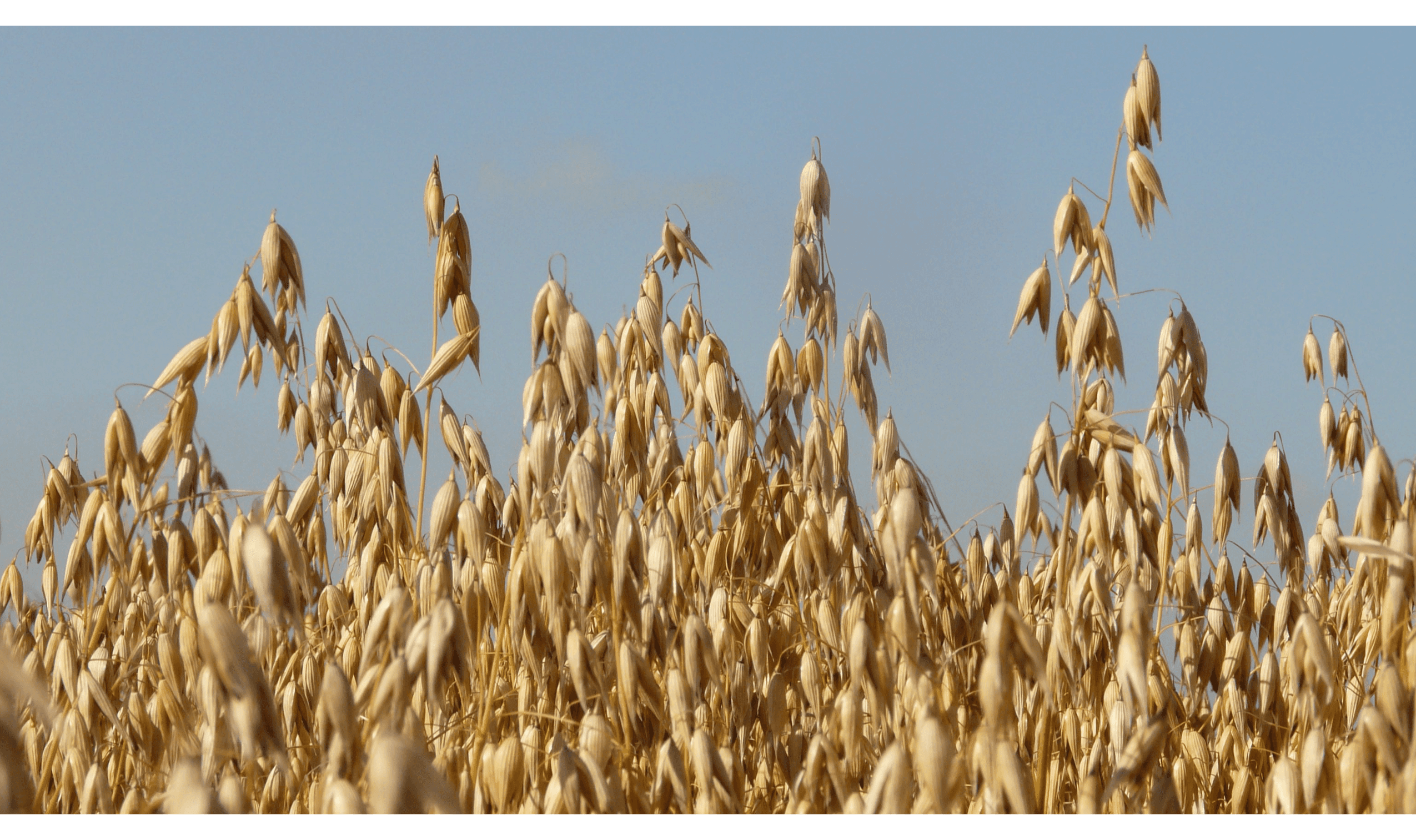
OVER THE LAST 25 YEARS, THE EPA HAS INCREASED THE AMOUNTS OF GLYPHOSATE RESIDUE ALLOWED ON OATS 300-FOLD.
Glyphosate is classified as a probable carcinogen by the World Health Organization and banned in Europe. Althought it’s “used primarily as a weed killer... it can also be sprayed on crops such as wheat, barley and oats to kill them and dry them out so they can be harvested earlier. In fact, the highest levels of glyphosate are found on foods treated this way.”
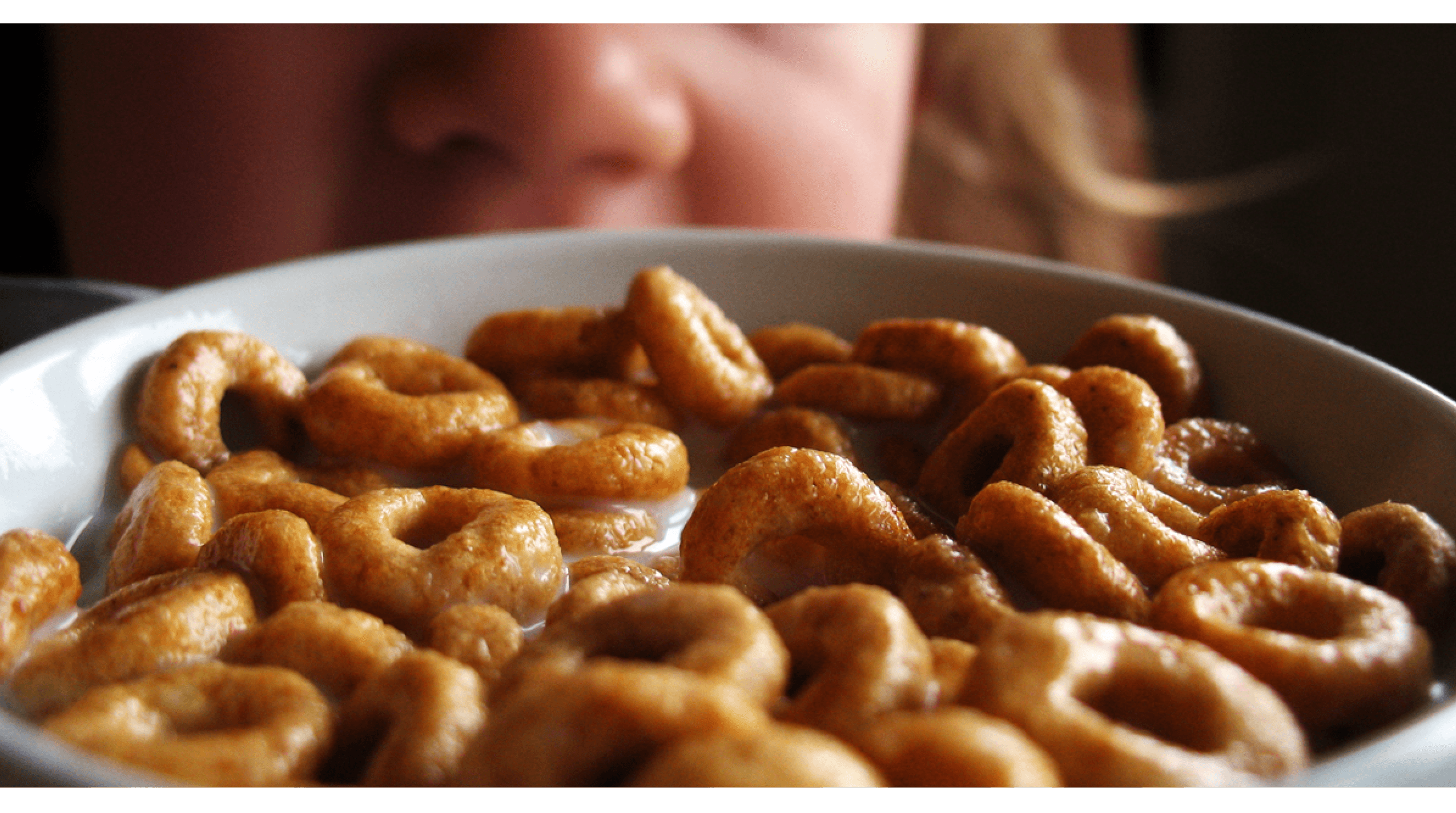
Glyphosate residues were found in General Mills’ Cheerios at 1,125.3 parts per billion (ppb). “Such a high level of glyphosate contamination found in Cheerios...should be a wake-up call for any parent trying to feed their children safe, healthy and non-toxic food.”
Sources: glyphosate - “Pre-Harvest Use of Weed Killer Leaves Potentially Unsafe Residues on Oat-Based Foods” EWG. “Widely Used Herbicide Linked to Cancer.” Scientific American | wheat image source: pxhere.com, public domain. | cheerios - Gillam, Carey. “Alarming Levels of Glyphosate Found in Popular American Foods.” EcoWatch. 2016. | cheerios image source: Pietro Bellini.
POTATOES
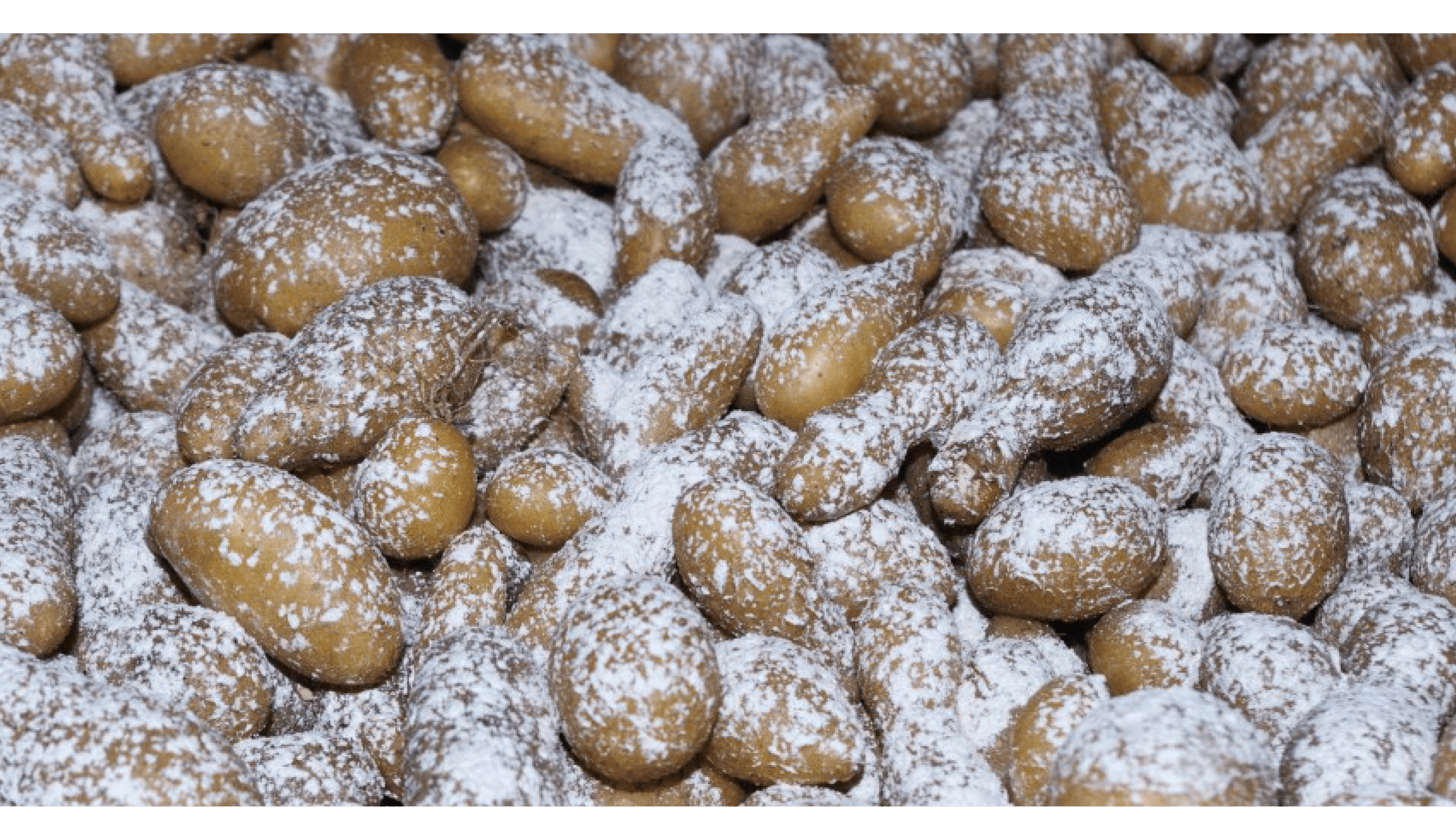
“For me the awakening came in a potato field in Idaho. The farmers sprayed fungicides that were so toxic they wouldn’t go into the field for five days afterwards because they were so worried about the effects of the chemicals. These potatoes can’t be eaten until they have six months to off-gas the systemic pesticides in them.” - Michael Pollan
Source: Michael Pollan. http://www.active.com/health/articles/the-diet-detective-interview-with-michael-pollan.
PRODUCE
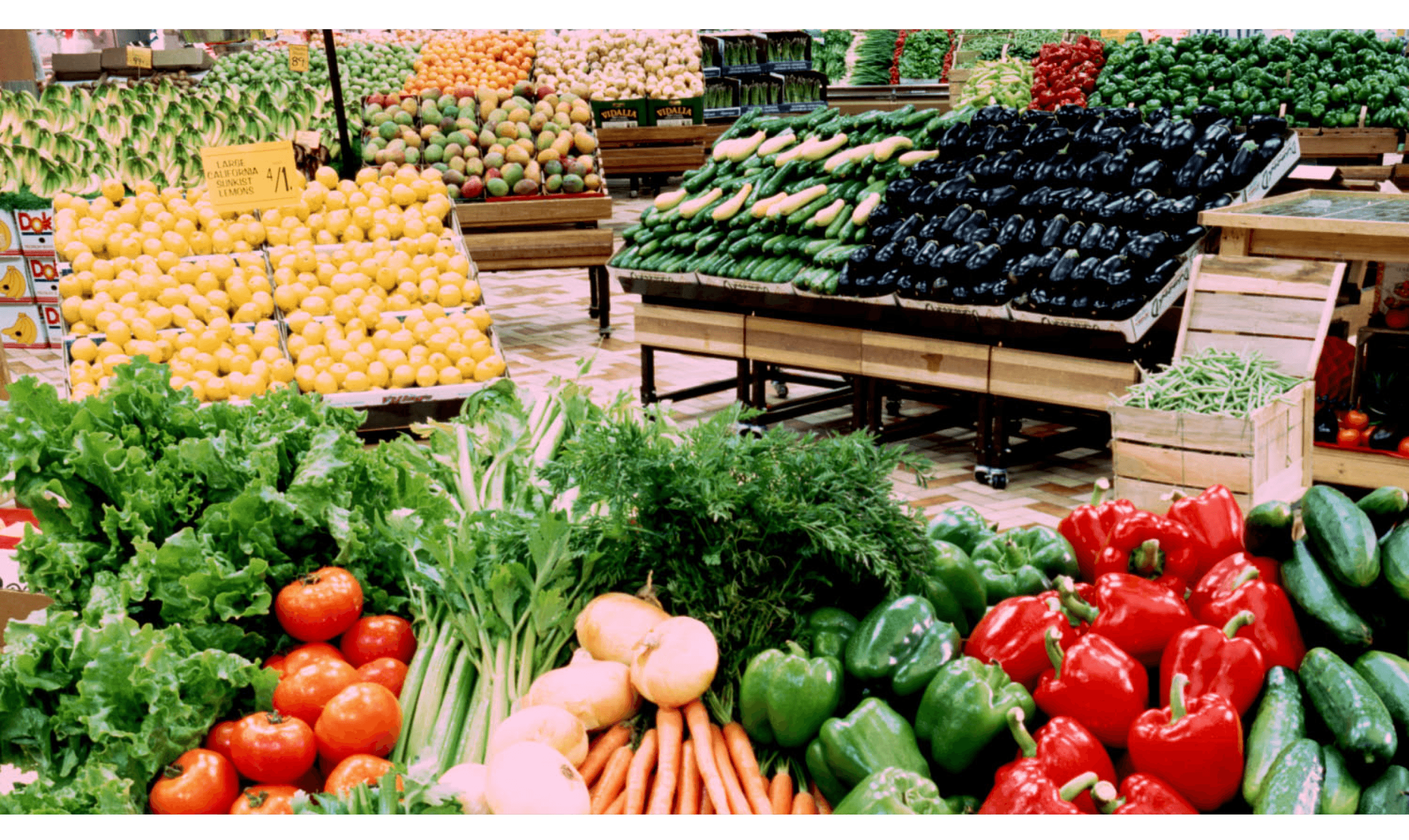
GOVERNMENT TESTS FOUND PESTICIDE RESIDUES ON 68% OF FOOD SAMPLES.
“The risk from pesticides on conventional produce varies from very low to very high, depending on the type of produce and on the country where it’s grown. The differences can be dramatic. For instance, eating one serving of green beans from the U.S. is 200 times riskier than eating a serving of U.S. grown broccoli.”
Source: Consumer Reports. “Pesticides in Produce.” Accessed 26 June 2015. Environmental Working Group.
CLEAN FIFTEEN
lowest in pesticides
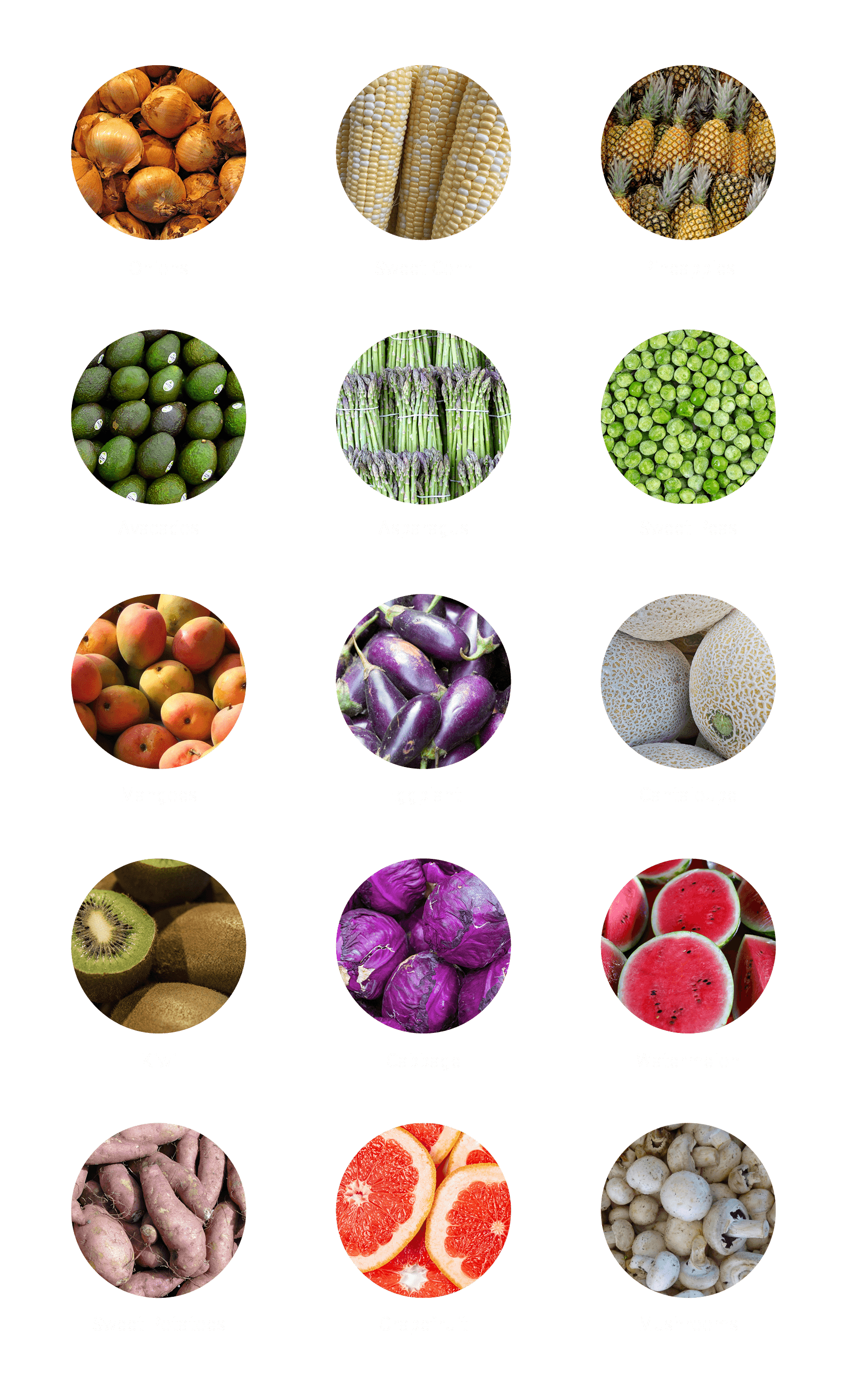
“A study by the Environmental Working Group of 43 fruits and vegetables shows that you can reduce your pesticide exposure from produce by up to 90 percent by avoiding the twelve most contaminated fruits and vegetables and eating the least contaminated instead.”
DIRTY DOZEN
buy these organic
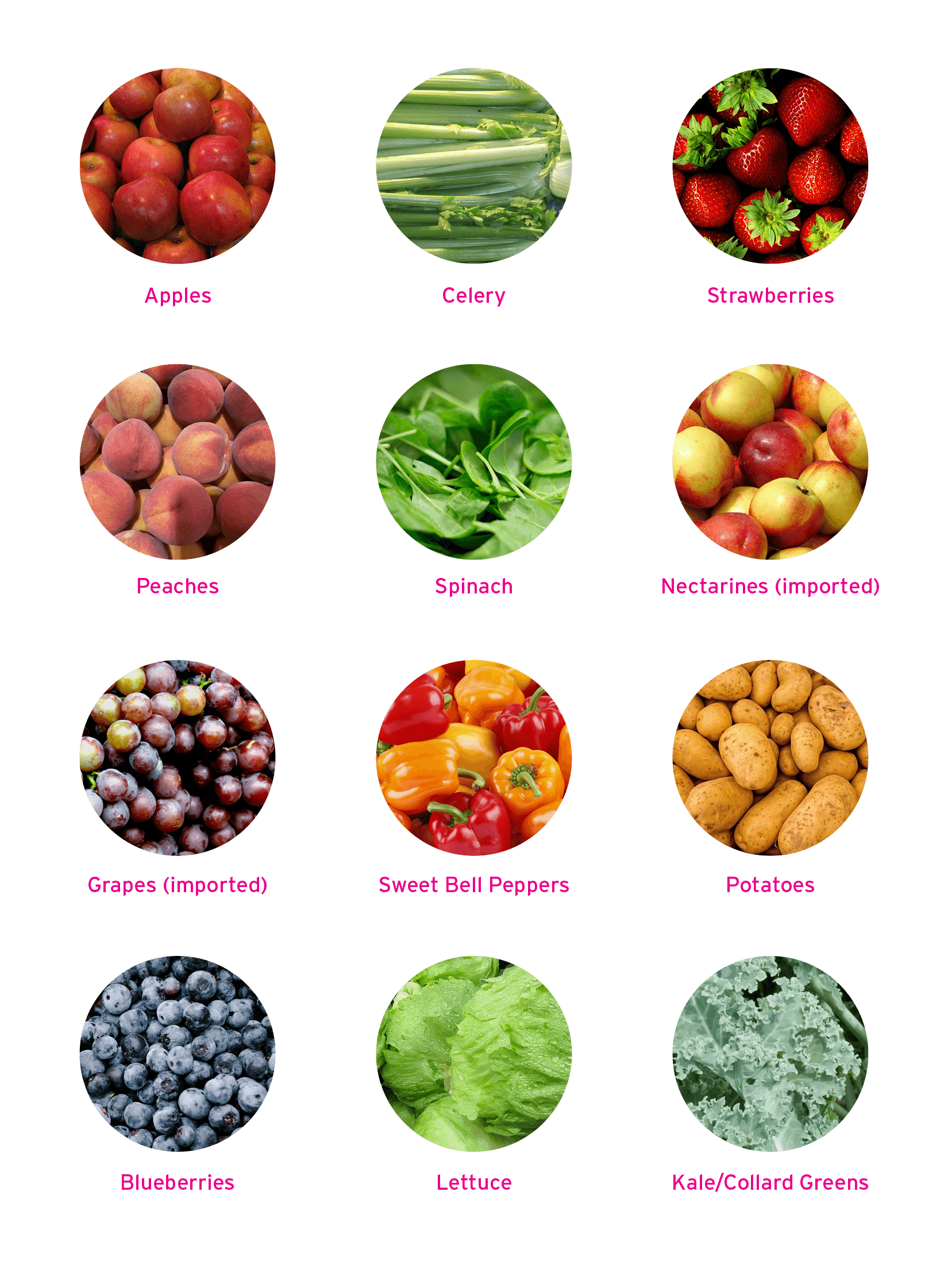
Source: Rodale Institute. Environmental Working Group.
SUGAR
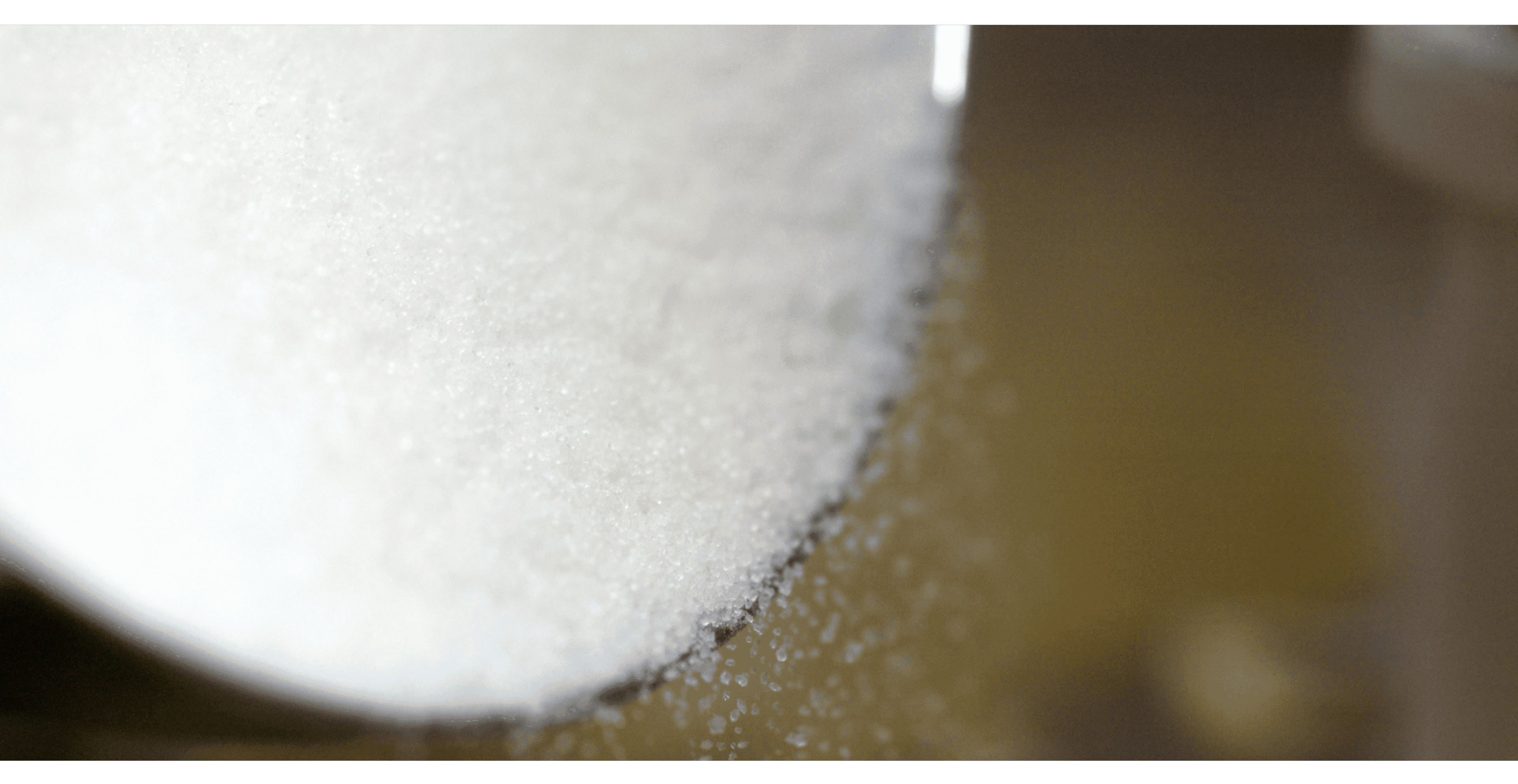
... IS THE LARGEST CROP IN THE WORLD, WITH 1.79 BILLION TONS GROWN ANNUALLY, AND HAS PROBABLY CAUSED A GREATER LOSS OF BIODIVERSITY ON THE PLANET THAN ANY OTHER SINGLE CROP.
Sources: WWF, FAO
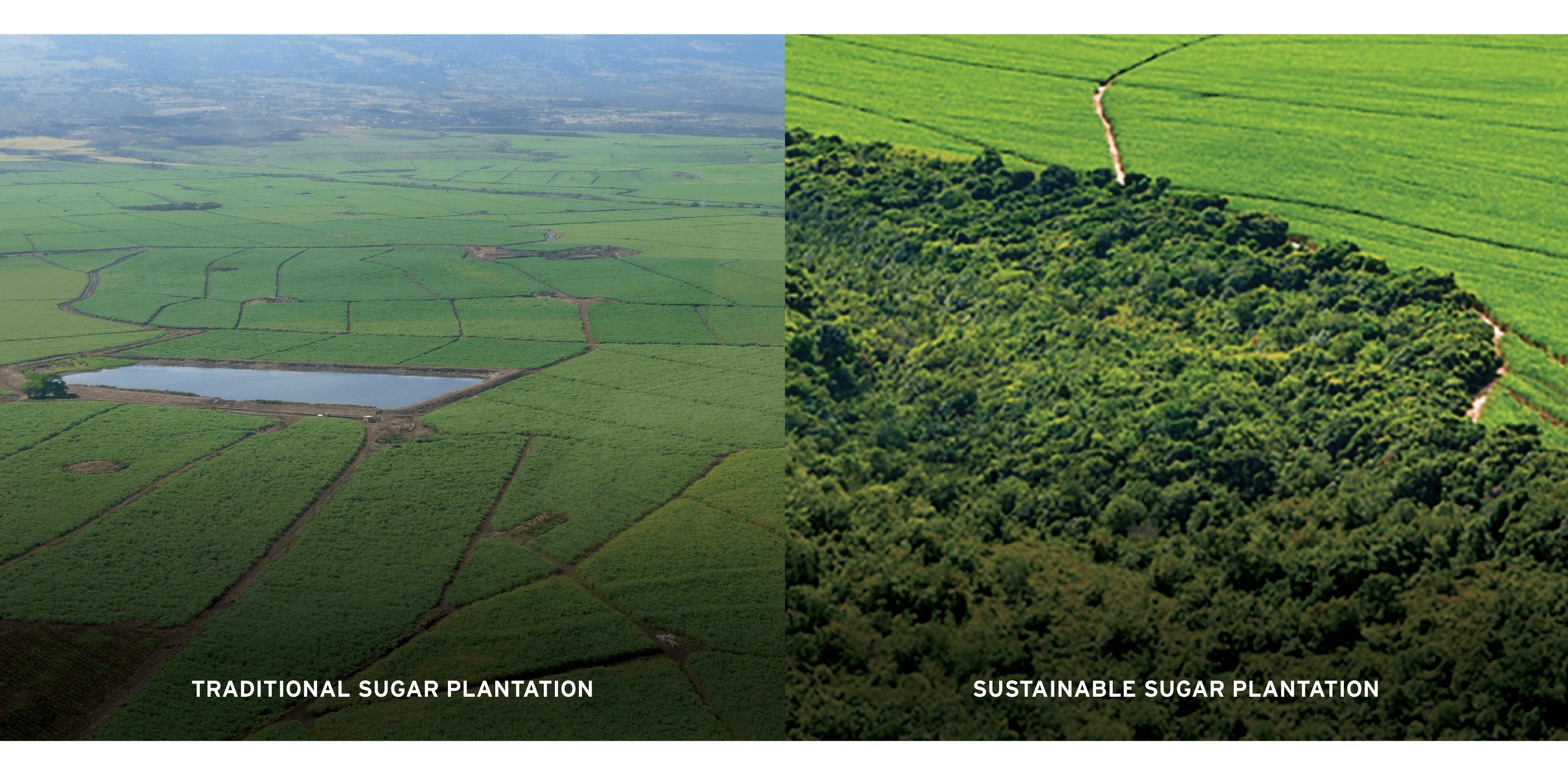
“Sugar may be responsible for more biodiversity loss than any other crop due to its destruction of habitat to make way for plantations, its intensive use of water for irrigation, its heavy use of agricultural chemicals, and the polluted wastewater that is routinely discharged in the sugar production process.”
- World Wildlife Fund, Infographic data from FAO and others
ONLY 5.8% OF SUGARCANE IS CERTIFIED SUSTAINABLE
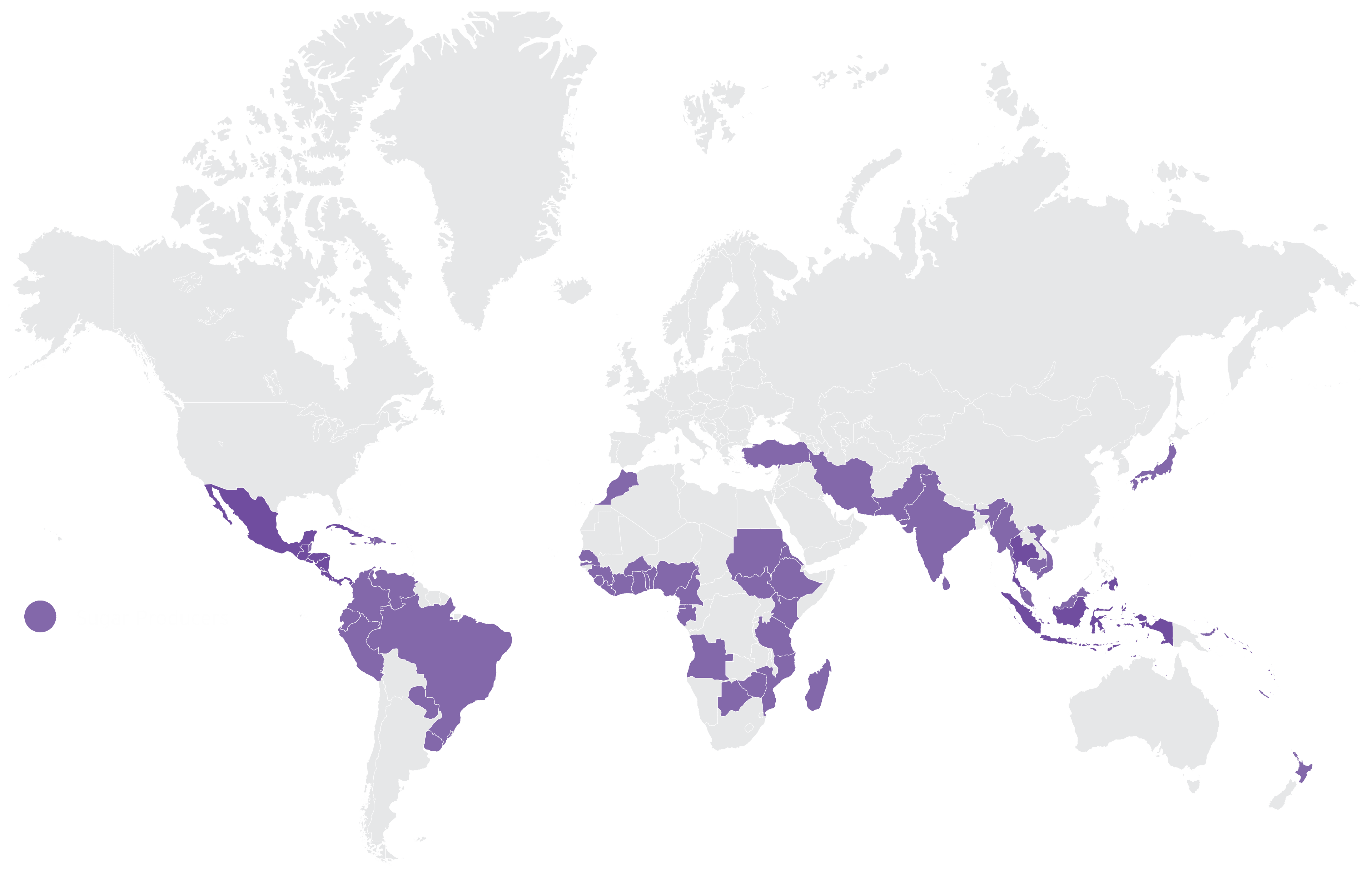
Sugar forms 20% of American diets. It can be grown with minimal chemicals and aid soil conservation, but is still water intensive. Eat less sugar. Buy natural sweeteners instead.
Sources: WWF, FAO, Bonsucro.
COCOA
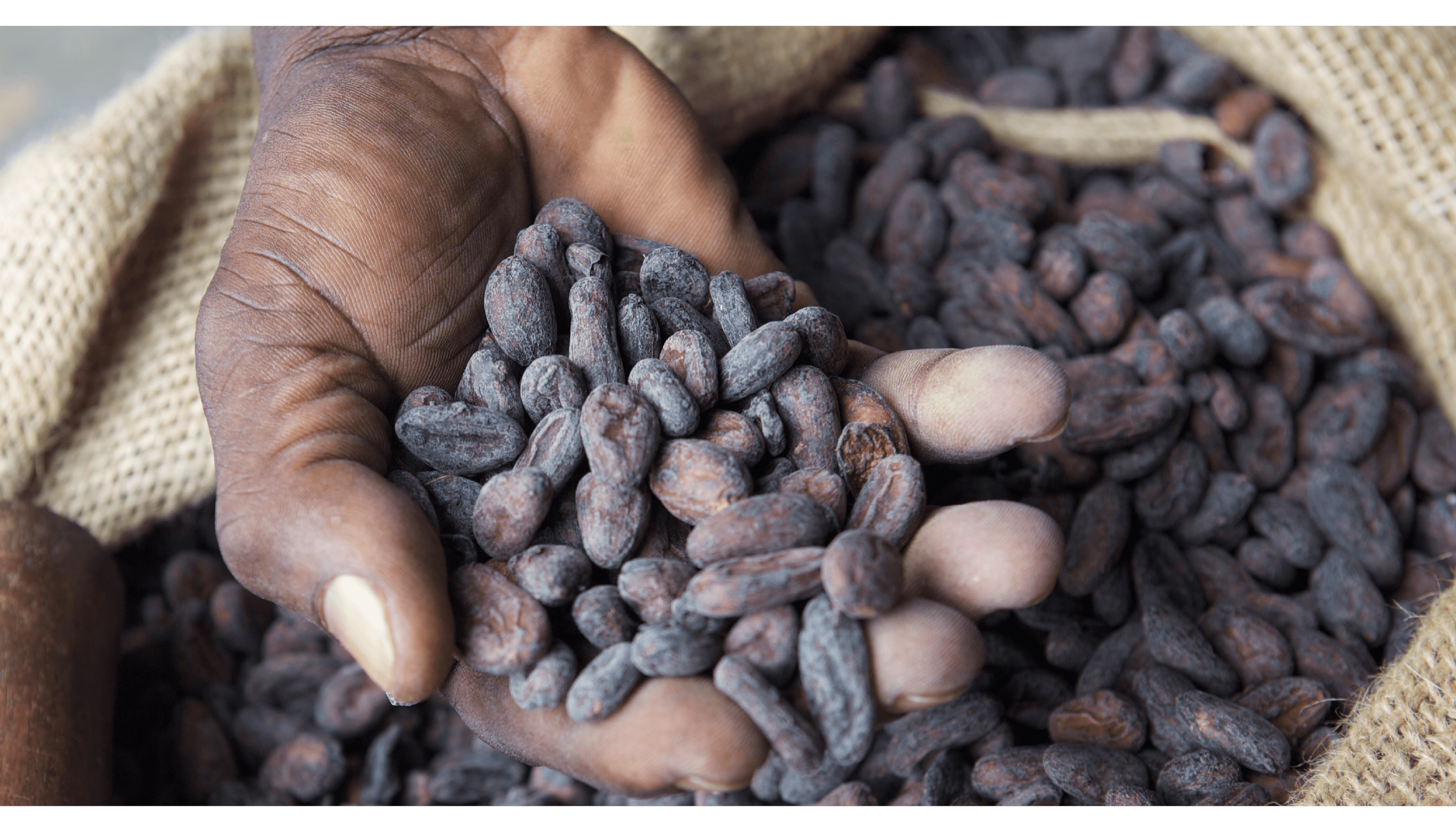
...IS THE WORLD'S 3RD MOST TRADED AGRICULTURAL PRODUCT AFTER COFFEE AND SUGAR.
Source: Rainforest Alliance
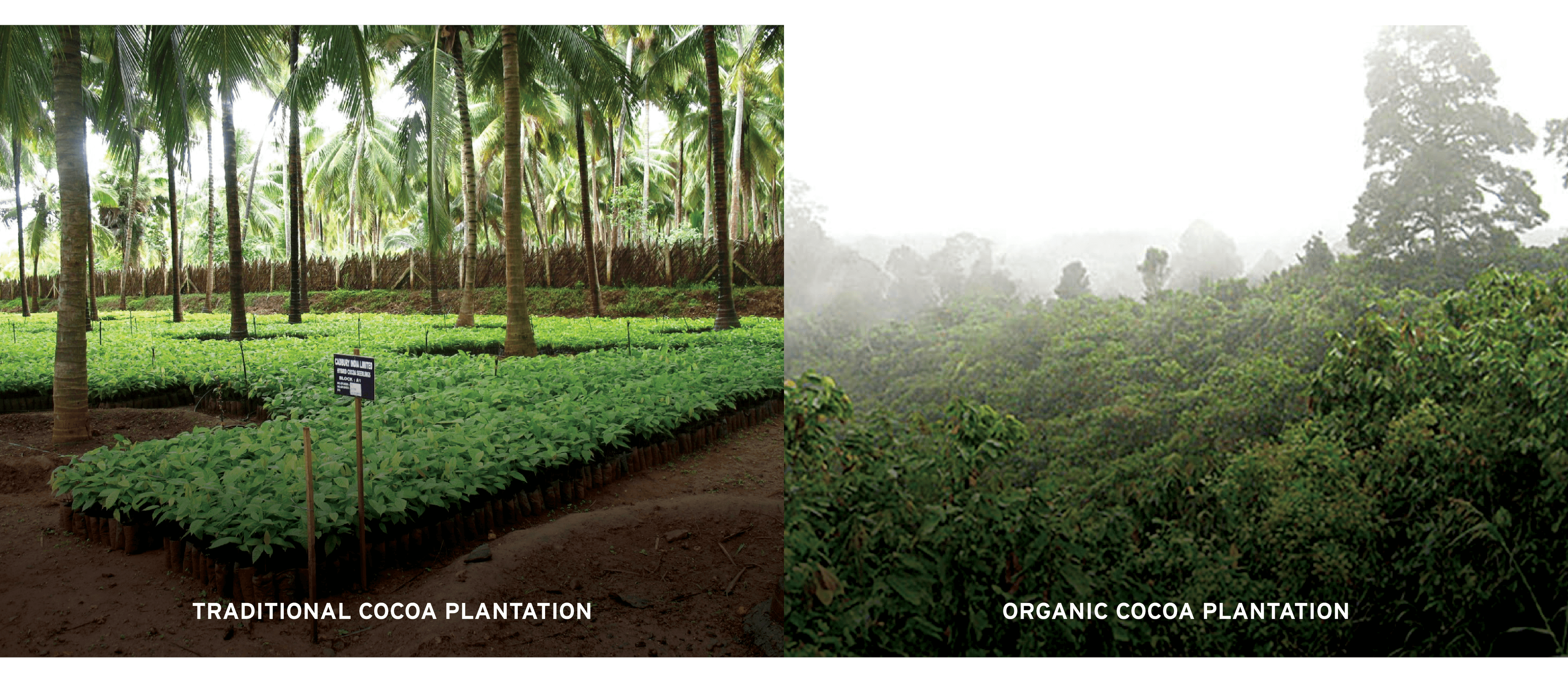
In Madagascar “... 90% of forest cover has gone up in smoke [and] coral reefs are bleached and dying...” due to cocoa plantations. “Cocoa farmers, encouraged by the fact that more sunlight provides a greater yield of cocoa pods, are removing the tree cover from their farms... [If we] restore tree canopy in farms, we would get a long-term, sustainable system and we would also be able to store a large amount of carbon.”
Sources: Conservation international, Organic Consumers Association
ORGANIC COCOA IS ONLY 3.4% OF THE MARKET.
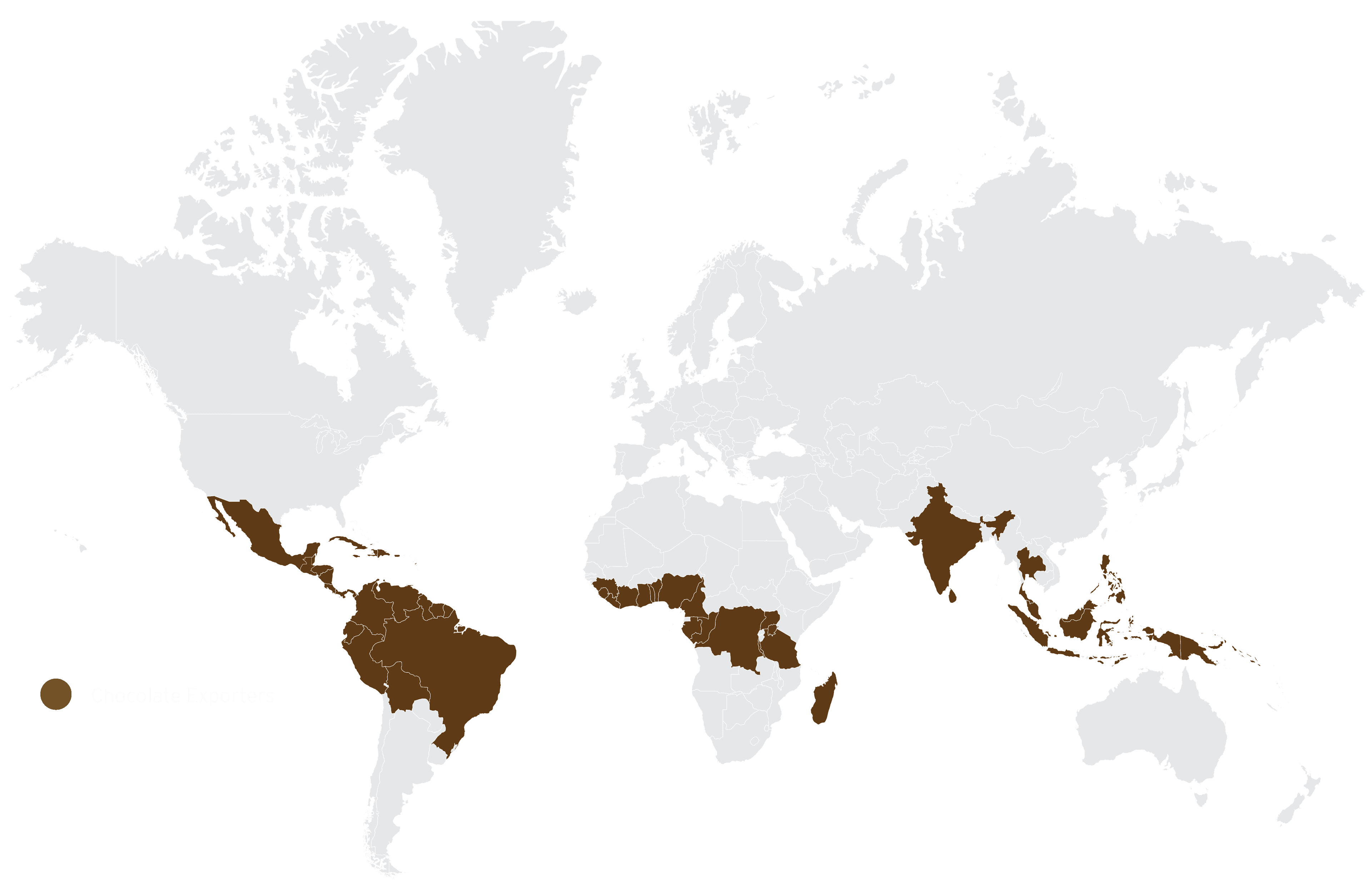
Support fair trade and organic.
Sources: International Cocoa Foundation; Cornell University; Research Institute for Organic Agriculture FiBL. Market Potential for Organic Cocoa. 2022.
COFFEE
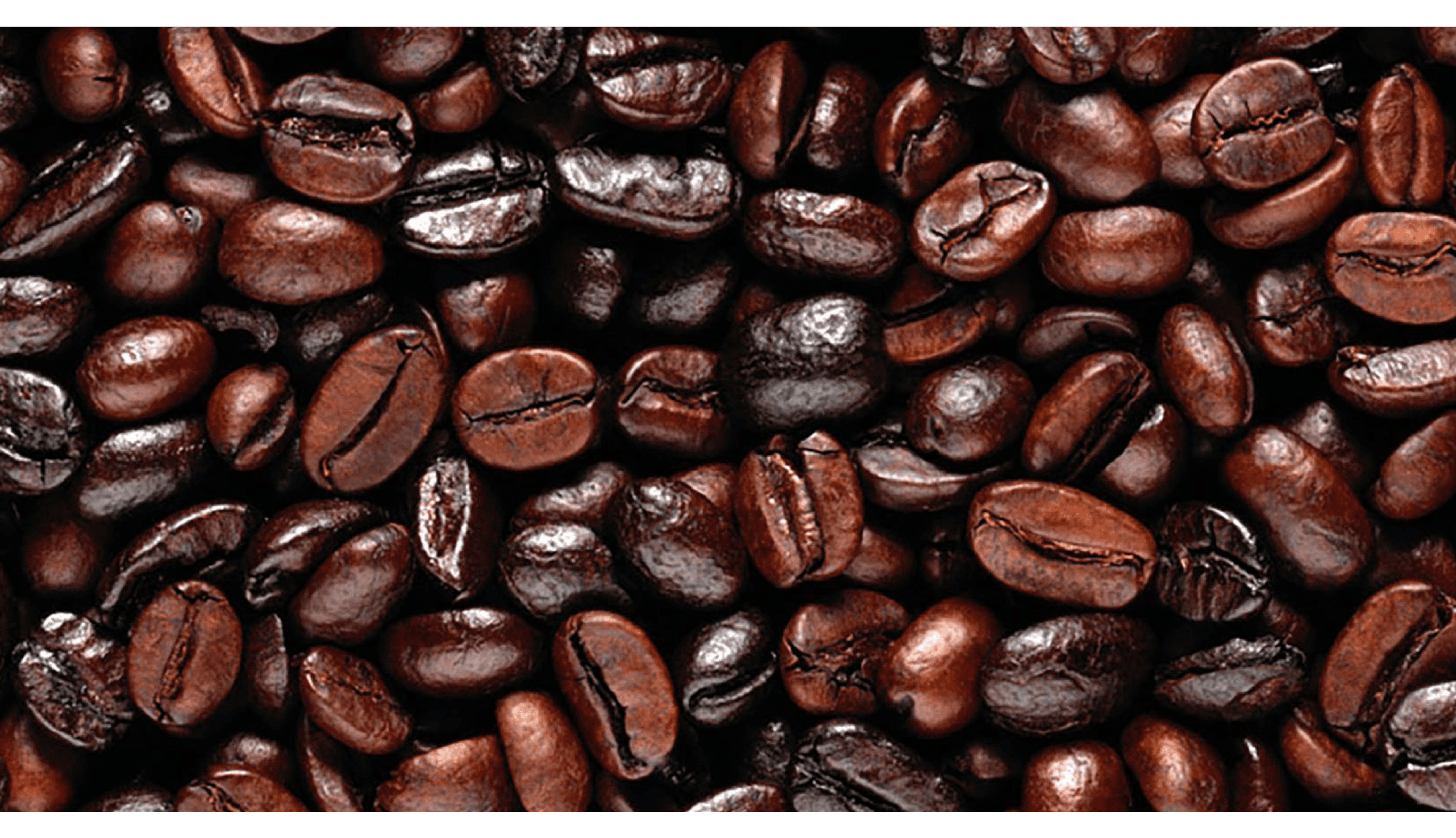
...IS THE MOST WIDELY TRADED TROPICAL PRODUCT.
Source: FAO, Markets and Trade, Commodities, Coffee. FAO.org
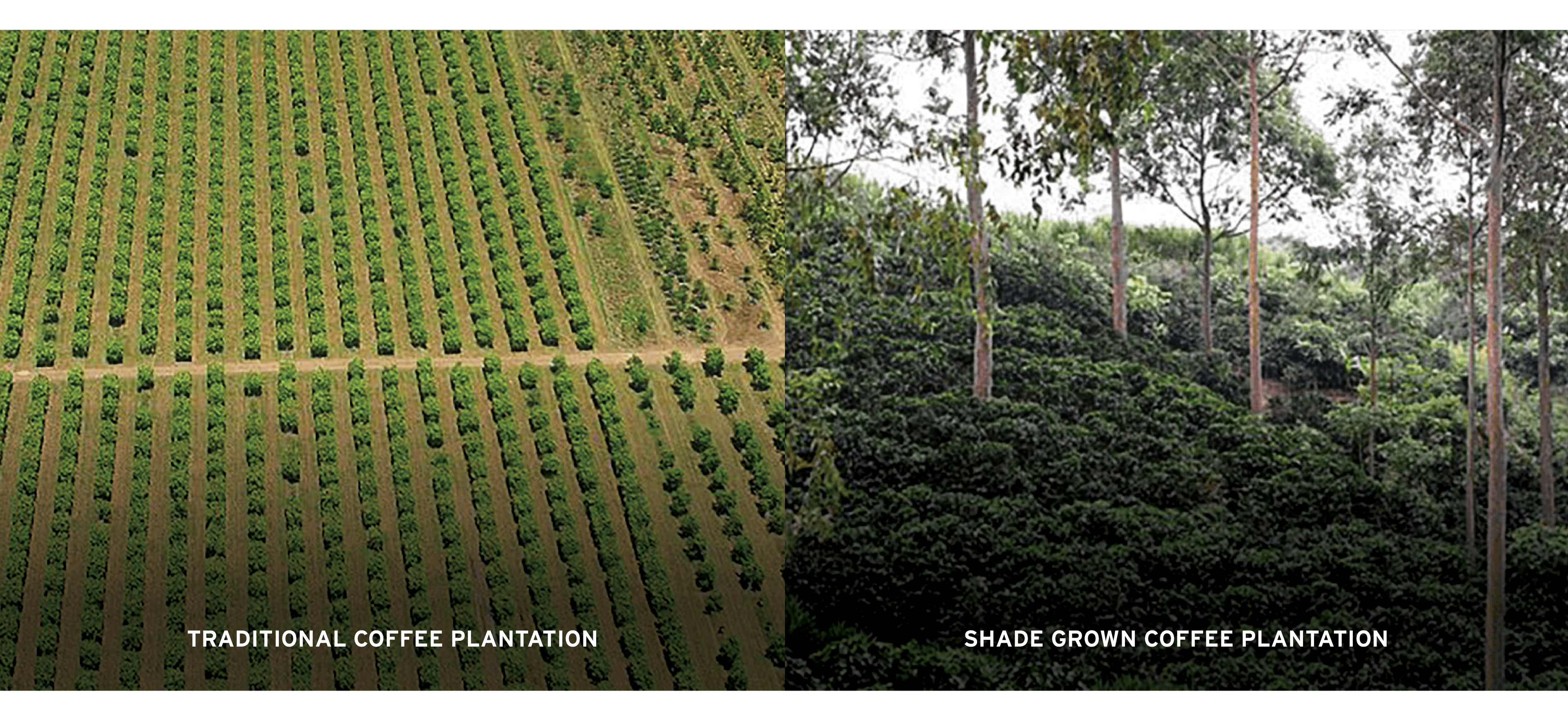
“About 150 species of birds live on shade-grown coffee farms, while only 20 to 50 inhabit full-sun farms. By drinking shade-grown coffee, you can help bird habitats and reduce the need for farming chemicals.” In 2009 sustainable coffee accounted for 8% of global coffee exports. However, sustainable coffee supply is higher than demand.
Source: Butselaar, Emily and Daisy Price. “50 Ways to Help Save the Planet.”
ONLY 3% OF THE WORLDS COFFEE IS GROWN ORGANICALLY.
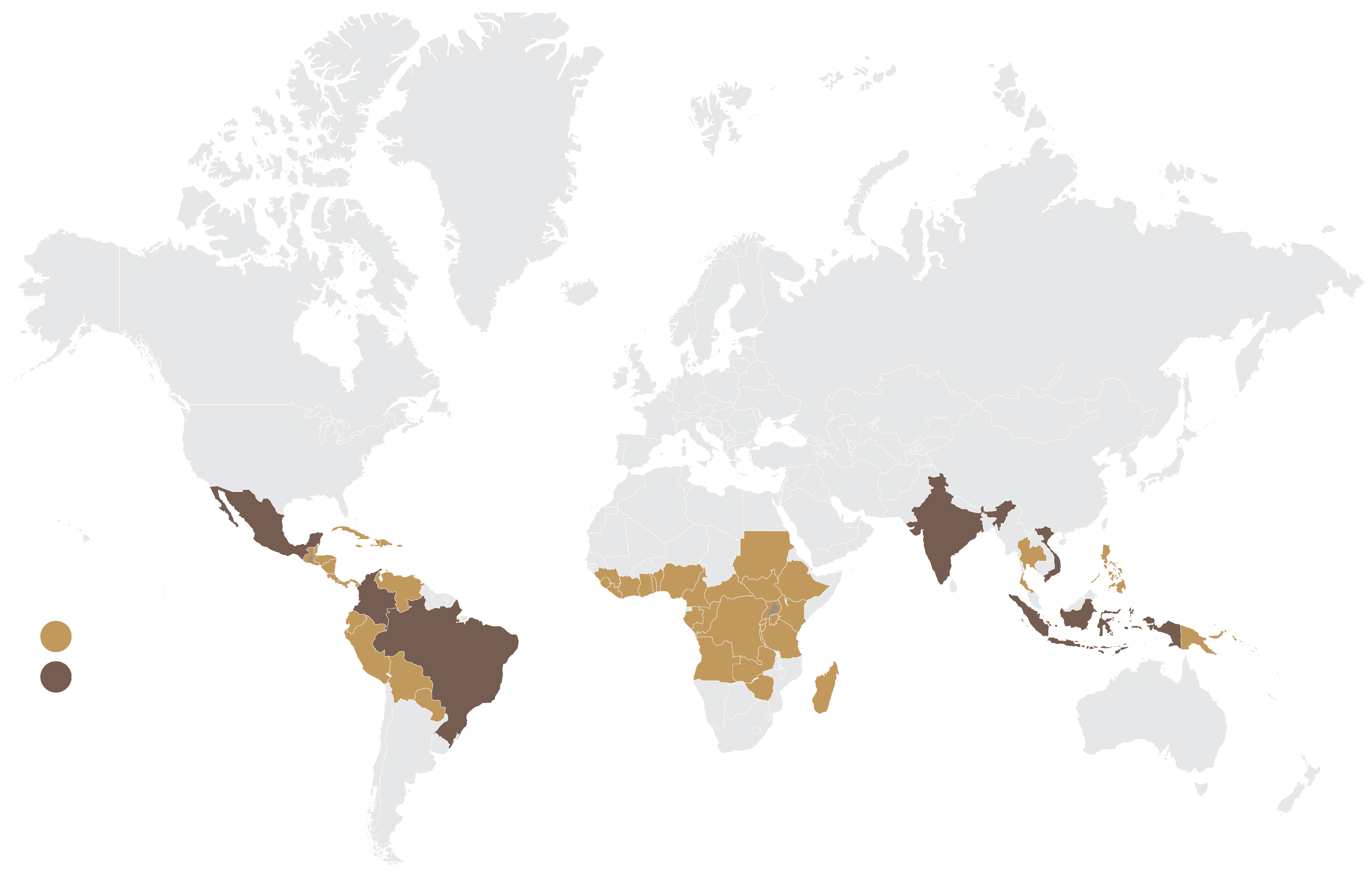
Support Sustainable and organic coffee.
Sources: FAO. "What Percent Of Specialty Coffee Is Organic Coffee?" The Commons. 2022.
TEA
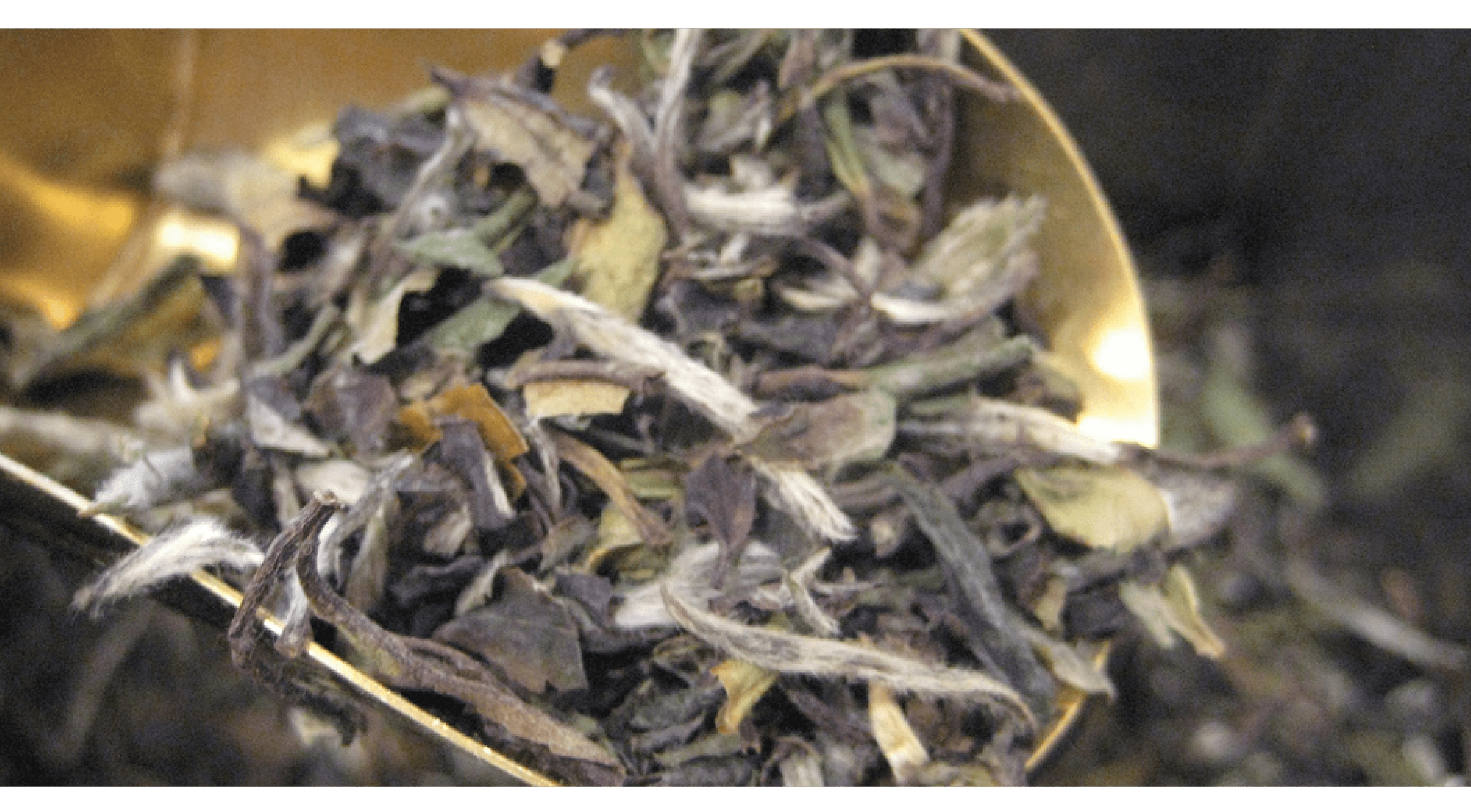
...IS THE SECOND MOST CONSUMED BEVERAGE, AFTER WATER.
Source: Dou QP. Tea in Health and Disease. Nutrients. 2019 Apr 25;11(4):929.
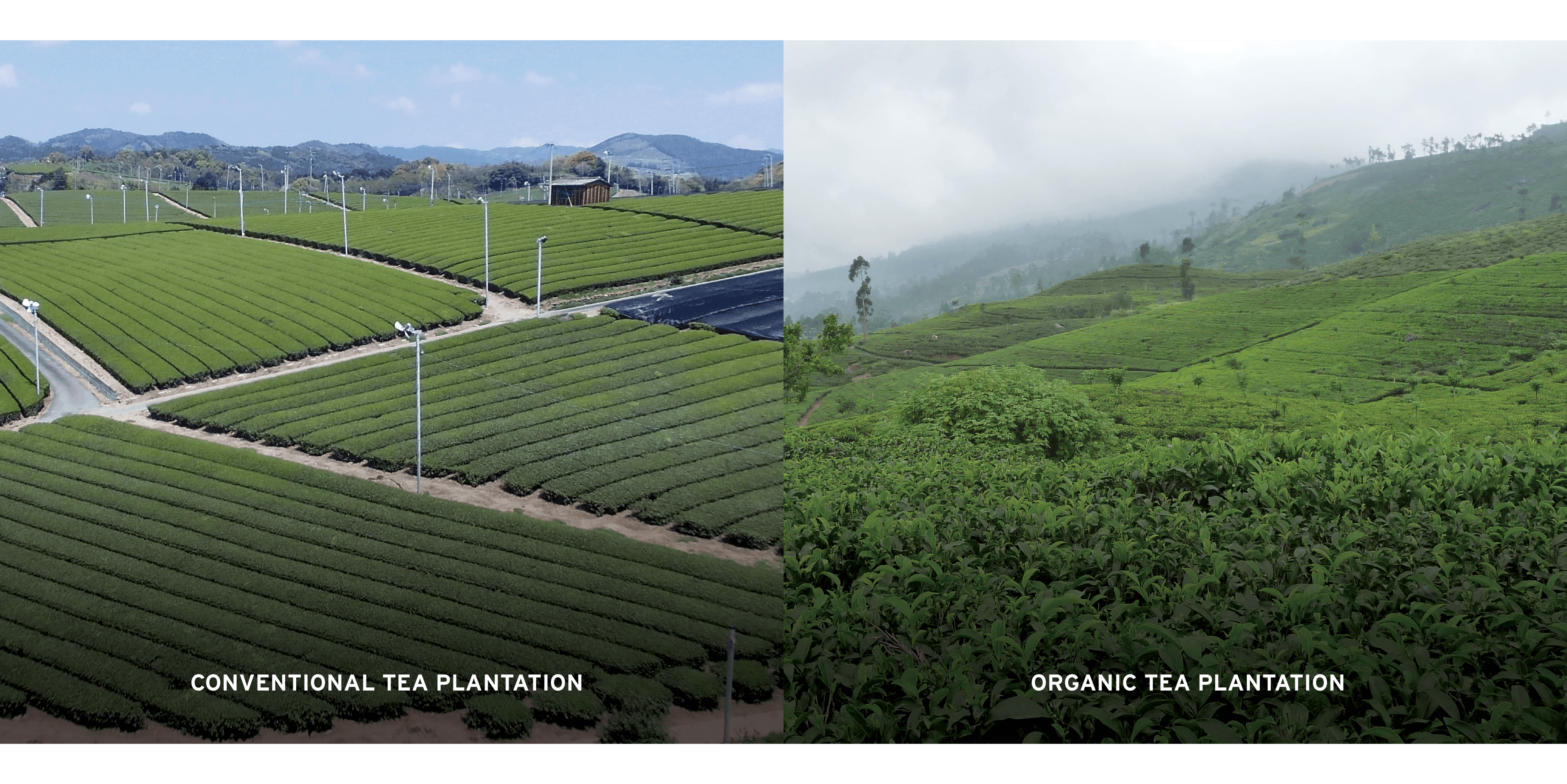
“...pesticides exert a massive toxic effect on the environment for a long duration, affecting birds, animals and humans... [In contrast] a typical organic field has five times as many wild plants, 57% more animal species, and 44% more birds than a conventionally cultivated farm.”
Source: Choice organic tea
ONLY 1% OF ALL TEA IS ORGANIC.
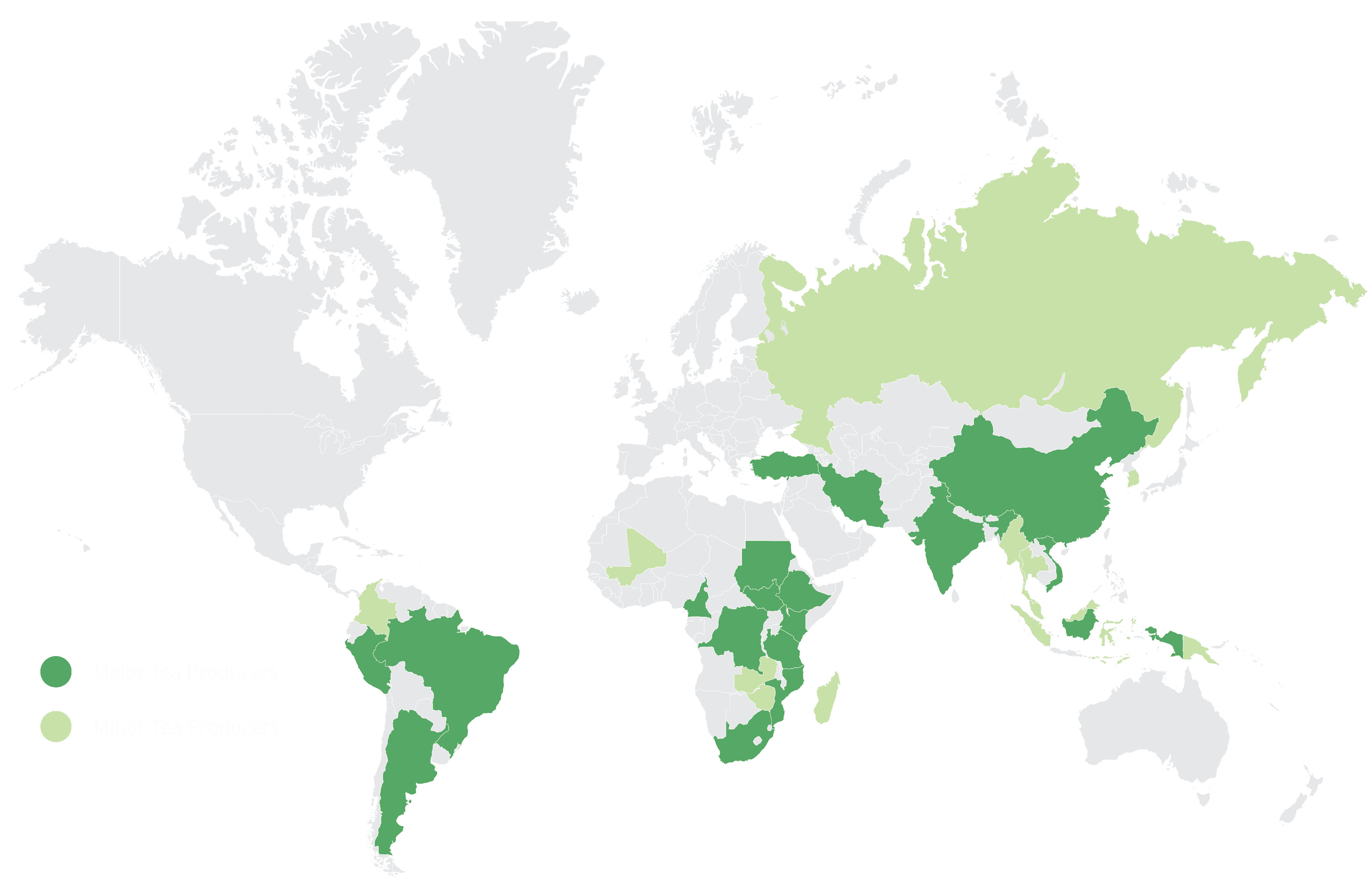
Buy organic and choose loose leaf.
Sources: Pillai, Latha. “Sustainable Food Security, Forward.” / http://www.greentea-store.com. "The Global Organic Tea Market Is Expected to Reach a Valuation of US$2.6 Billion by 2032" World Tea News. 2022.
PALM OIL
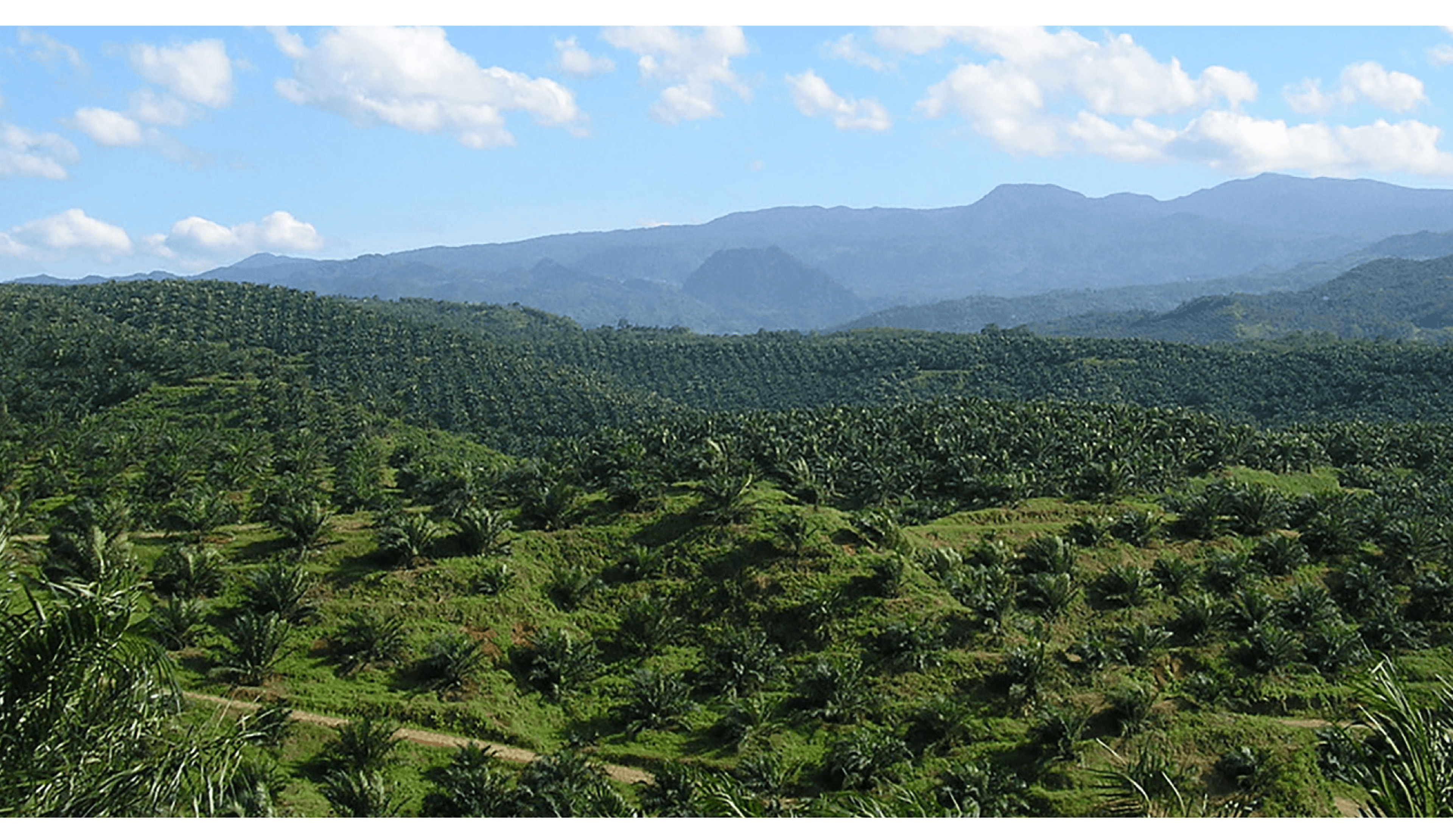
...IS USED IN 50% OF ALL PACKAGED FOOD.
Source: "Seven Things to Know About Palm Oil" WWF
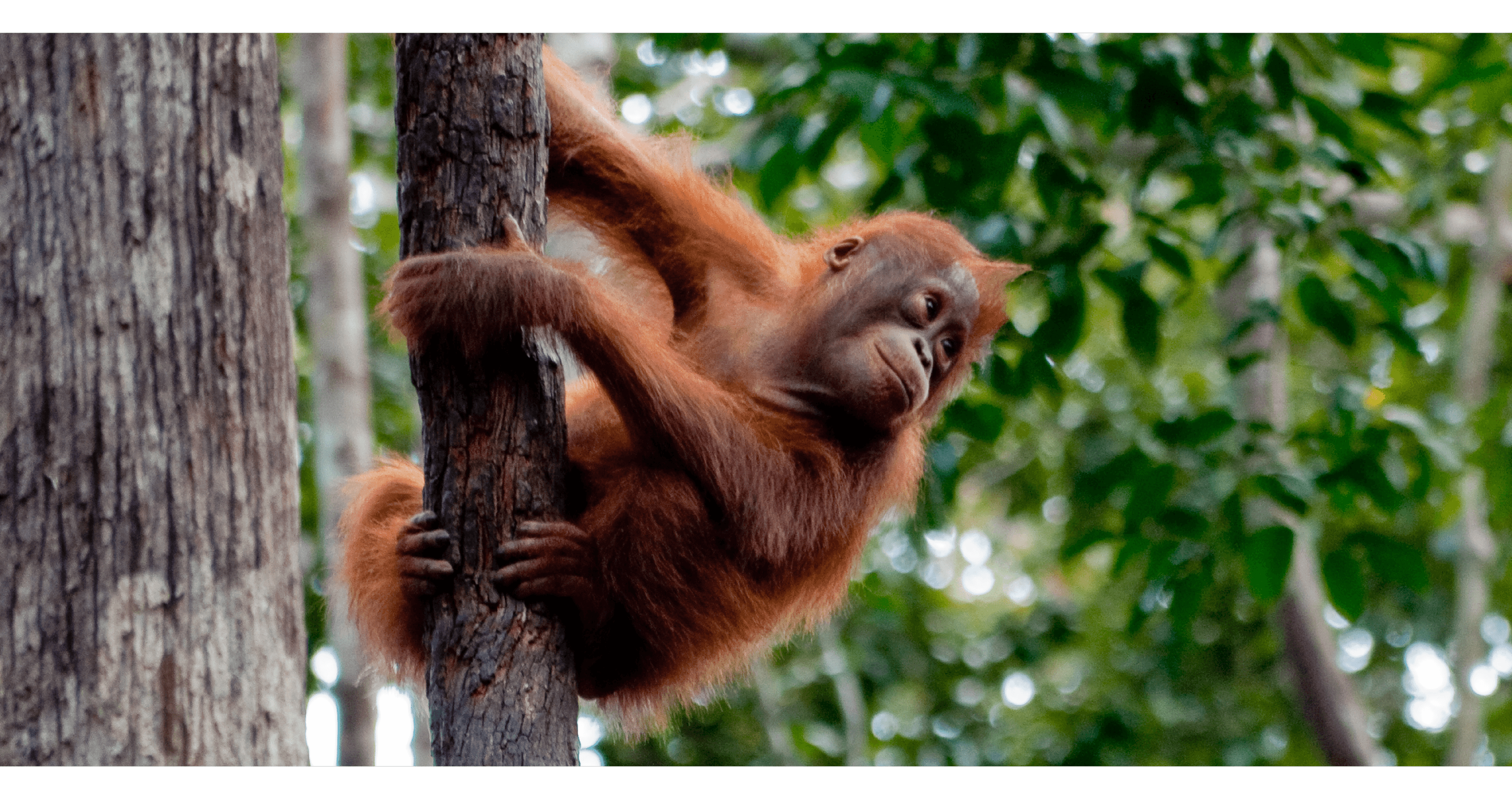
Since 1900 90% of Sumatra’s orangutan population has disappeared. “The United Nations Environment Program predicts that orangutans will be virtually eliminated in the wild within two decades if current deforestation trends continue.”
Source: Chermayeff, Nick. “How Does Deforestation Affect Orangutans?” Scientific American. 14 May 2009.
BUY LESS PROCESSED FOOD.
AVOID PALM OIL OR BUY CERTIFIED SUSTAINABLE PALM OIL (CSPO).
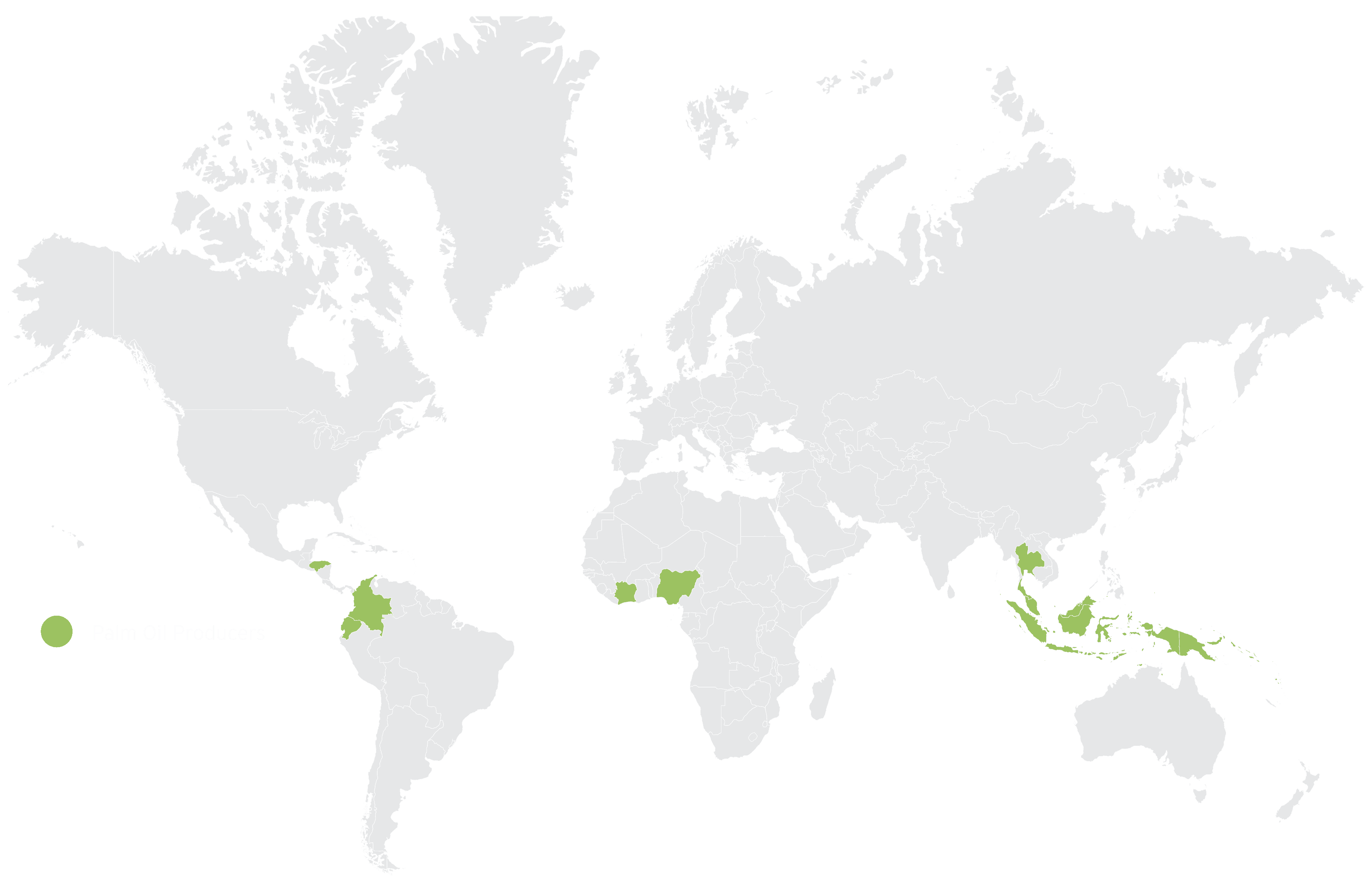
“Nearly 80 mammal species are found in Malaysia’s primary forests. ...While oil plantations have only 11 or 12.”
Source: Motavalli, Jim. “The Meat of the Matter.”
COTTON
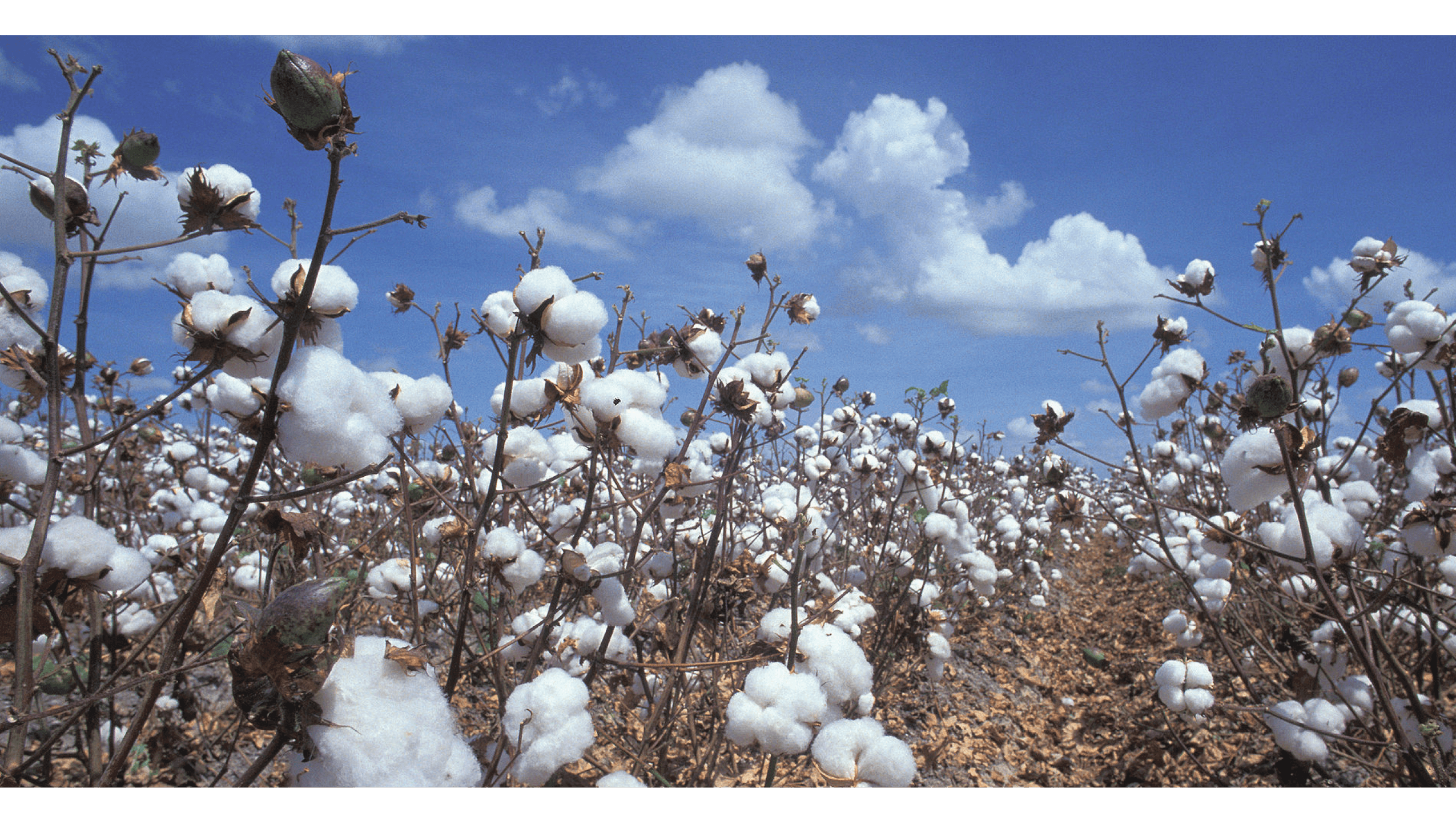
...ACCOUNTS FOR HALF OF THE FIBER WORN IN THE WORLD AND USES MORE THAN 10% OF THE WORLD'S PESTICIDES AND NEARLY 25% OF THE WORLD'S INSECTICIDES.
Source: http://www.panna.org/resources/cotton
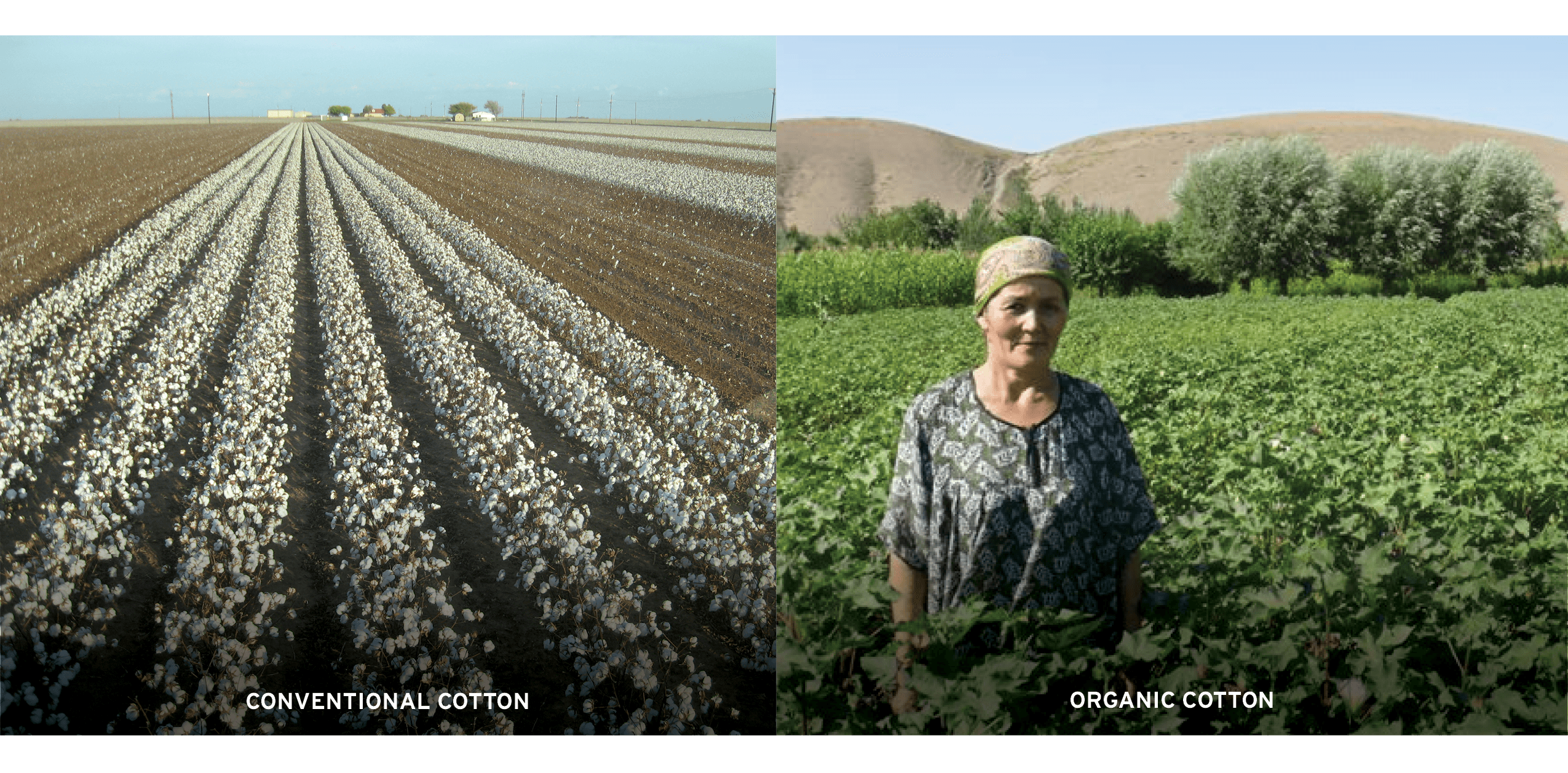
“Substituting organic fibers for conventionally grown fibers is not just a little better – but lots better in all respects: uses less energy for production, emits fewer greenhouse gases and supports organic farming (which has myriad environmental, social and health benefits).“
Source: http://oecotextiles.wordpress.com/2011/01/19/estimating-the-carbon-footprint-of-a-fabric/.
ORGANIC COTTON IS ONLY 1.1% OF THE GLOBAL MARKET.
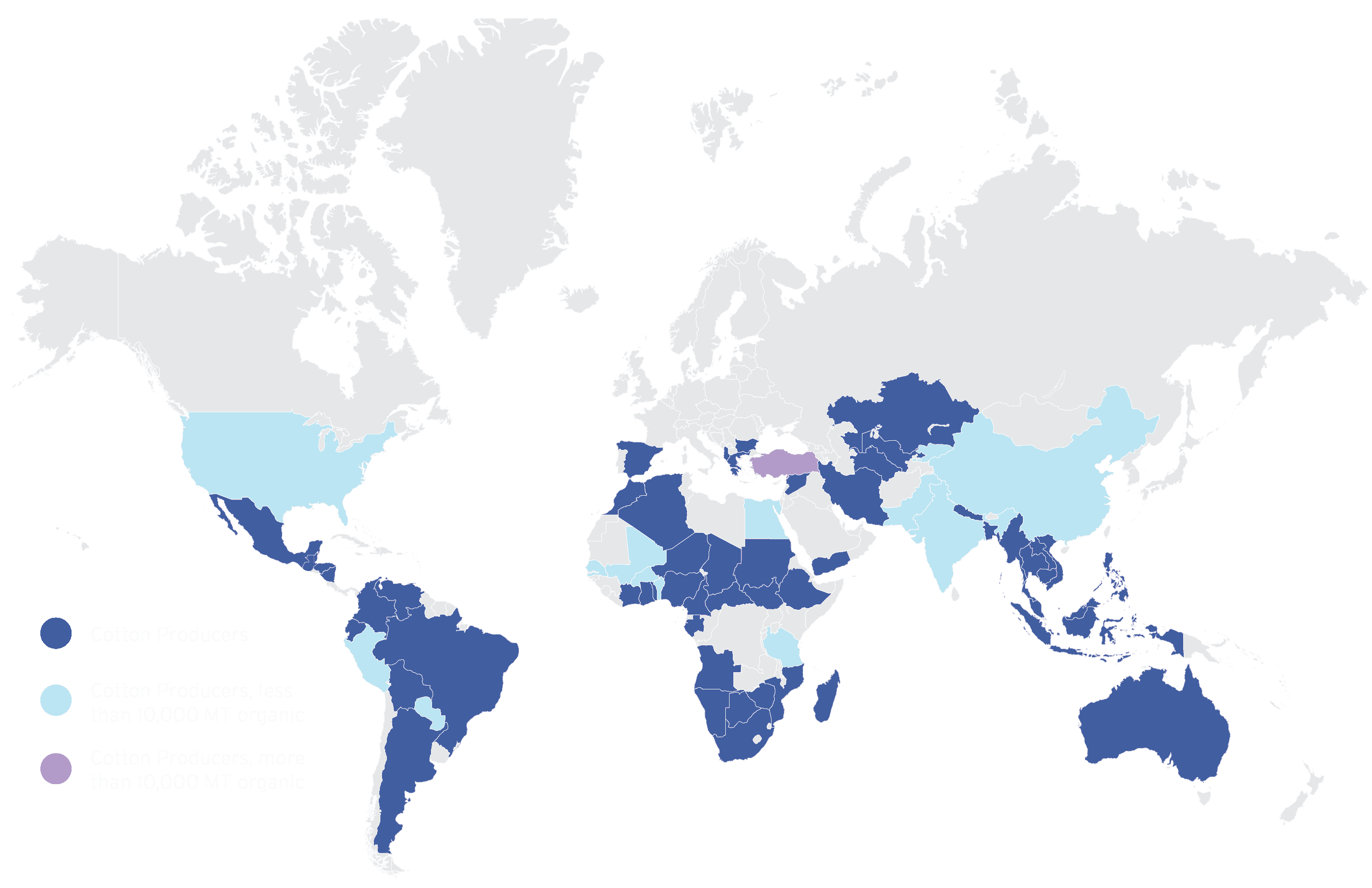
Buy organic, buy vintage.
Sources: http://www.nationmaster.com/graph/agr_cot_pro-agriculture-cotton-production, Organic Exchange, PAN UK, ICAC, FAO
DIVERSIFY CROPS AND PLANT FOR RESILIENCE
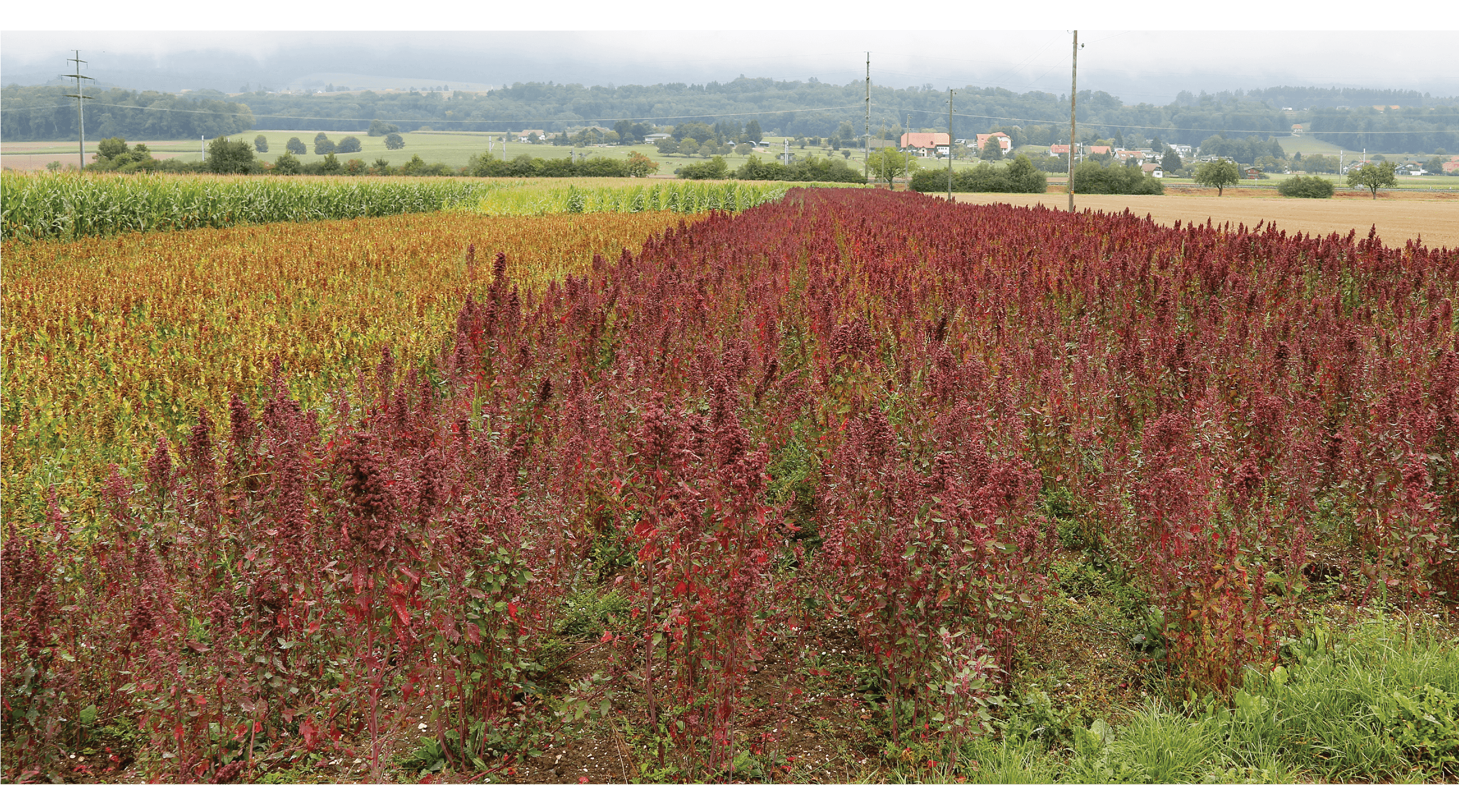
Of the world’s 250,000 edible plant species, just 3 of them, rice, maize and wheat, provide 60% of the world’s food energy intake. We need an expansion of diversity of globally important crops.
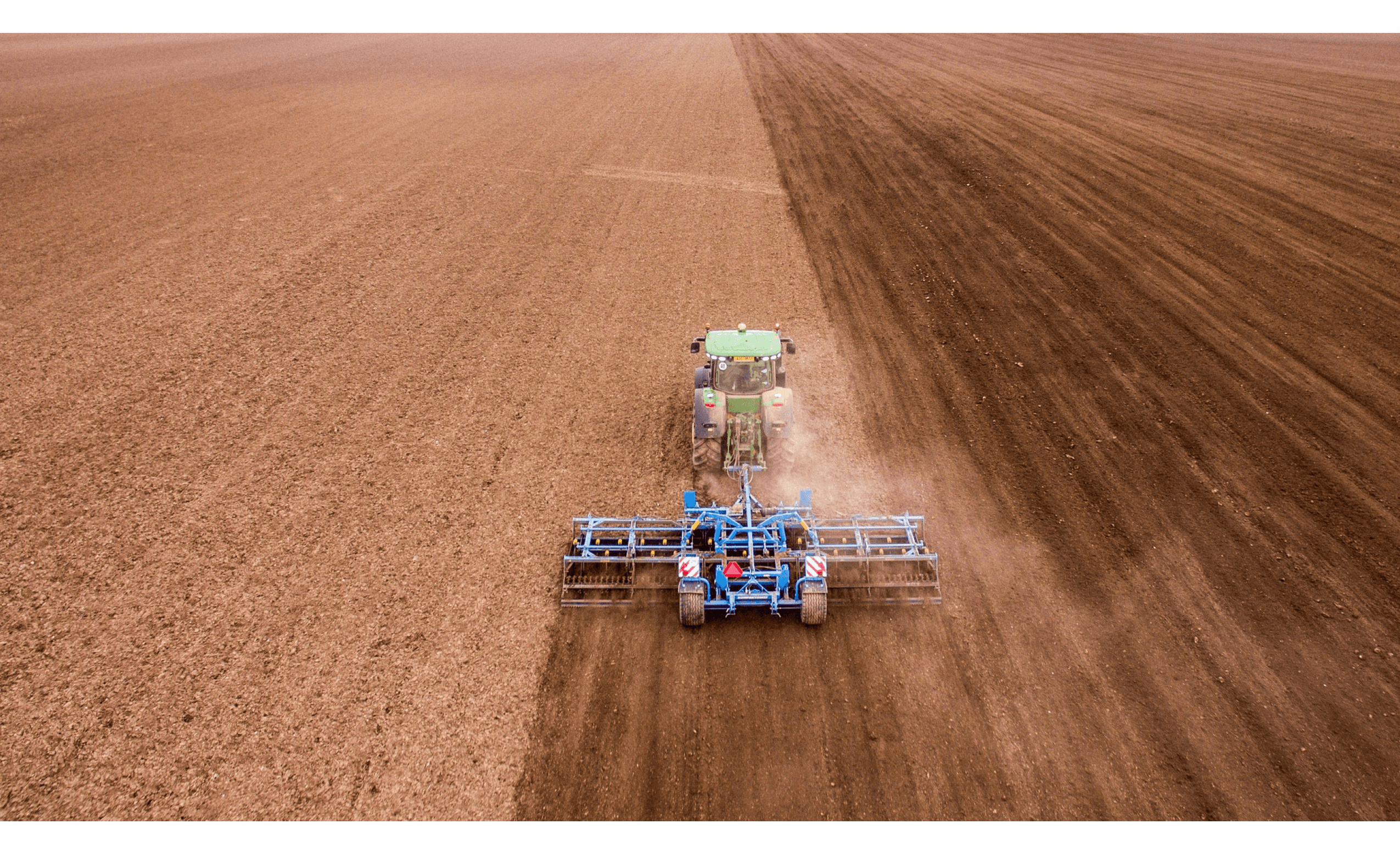
“A danger of a more homogeneous global food basket is that it makes agriculture more vulnerable to major threats like drought, insect pests and diseases, which are likely to become worse in many parts of the world as a result of climate change...”
Source: Kinver, Mark. “Crop Diversity Decline ‘Threatens Food Security.’” quote by Luigi Guarino of the Global Crop Diversity Trust. BBC News. 3 March 2014. FAO.
CAN WE RETHINK WHERE WE GROW WHICH CROPS?
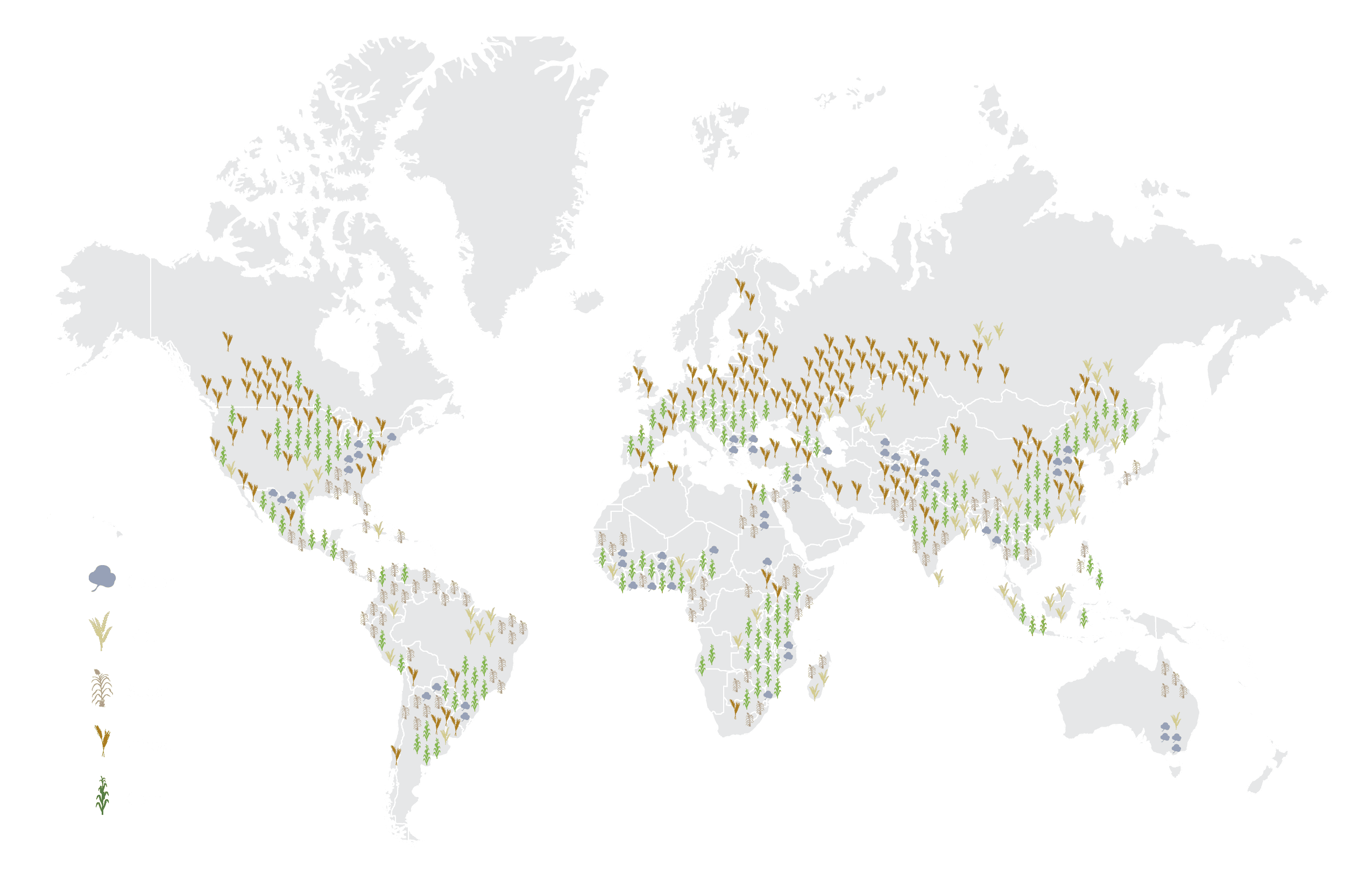
Cotton, rice, sugar cane and wheat are the ‘thirstiest’ crops in 9 large river basins rich in biodiversity. Together, these 4 crops account for 58% of the world’s irrigated farmland.
Source: Aiguo Dai, Drought under global warming: a review. Wiley Interdisciplinary Reviews: Climate Change, FAO (List of Countries by Production); http://www.quantumrun.com/. WWF, "Thirsty Crops."
WHAT IF WE GREW CROPS BETTER SUITED FOR THEIR ENVIRONMENT?
"80-85% OF THE WORLDS PLANT-BASED FOOD SUPPLY COMES FROM ANNUAL PLANTS, THAT HAVE TO BE GROWN FROM SCRATCH EVERY YEAR."
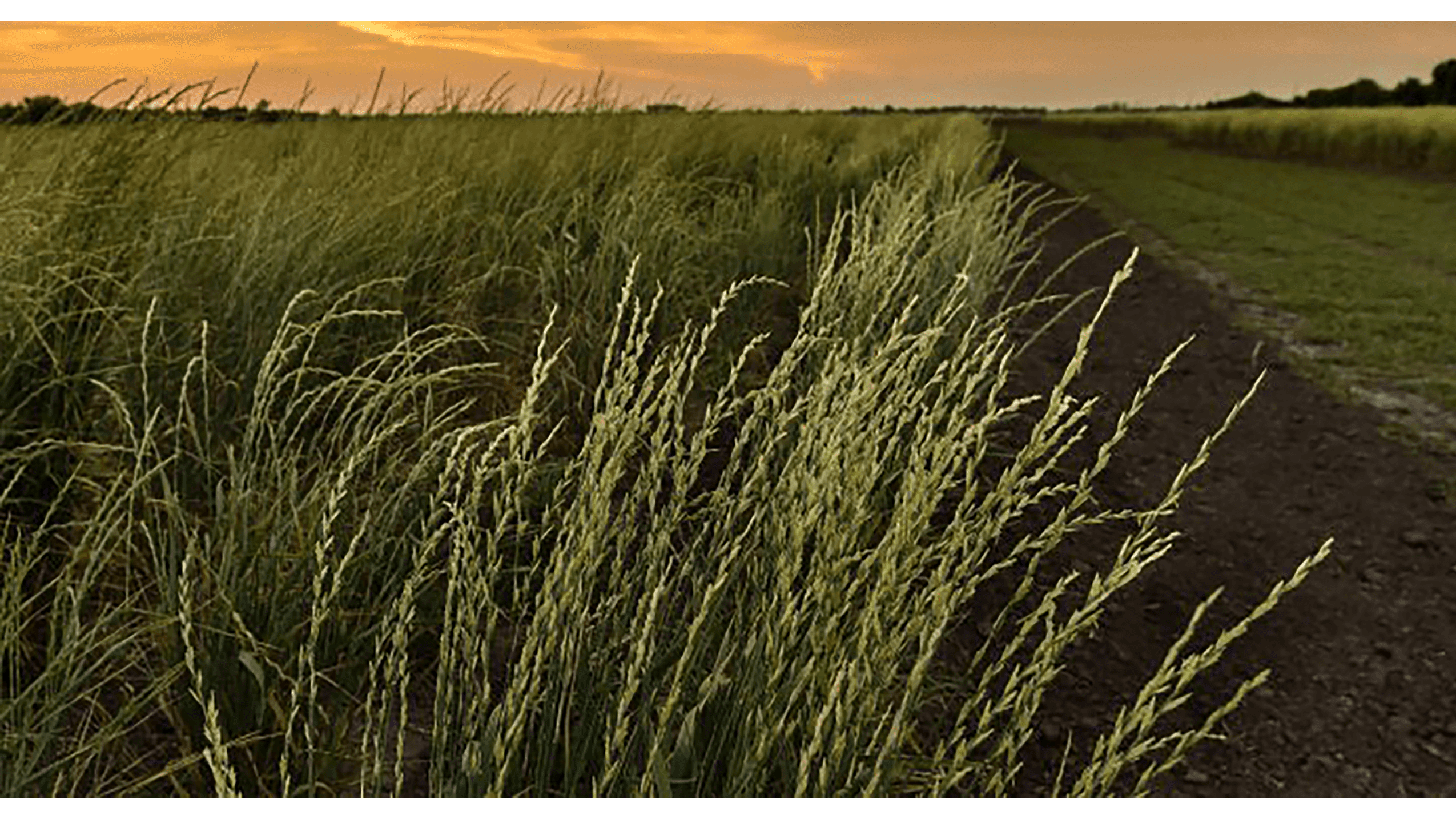
A field of Kernza® grain at the Land Institute
“Experts worldwide think perennial grains, [Like Kernza developed by the land institute] with long, drought-resistant roots, make more sense in a time of climate change.”
Sources: “Kernza - Perrenial Wheat for a Healthier Planet” Whole Grains Council. Image: The Land Institute.
DROUGHT RESISTANT GRAINS
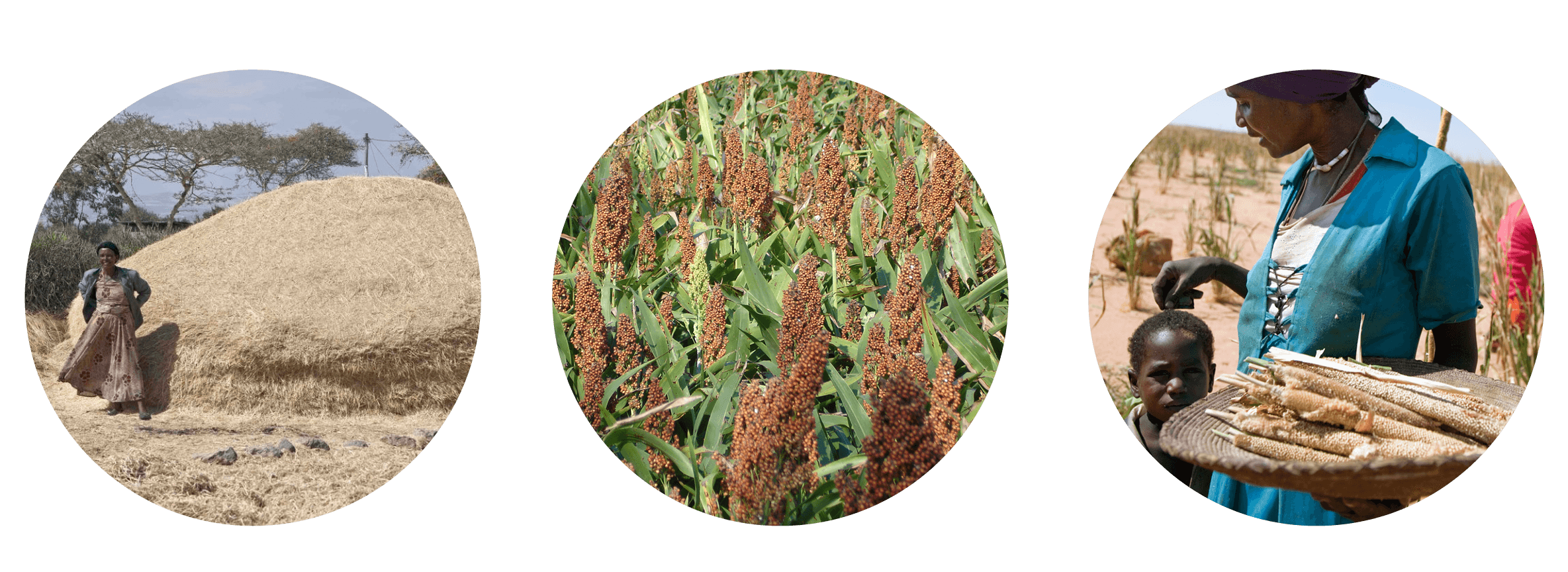
TEFF: Requires less water. Ethiopians have been growing it for millennia, and it may become the new “super grain” of choice in Europe and North America, overtaking the likes of quinoa and spelt.
SORGHUM: The grain thrives in hot and dry conditions that wither its more well known compatriots, meaning it may be the wave of the future if droughts in grain growing regions become commonplace.
MILLET: survives well in dry areas and its grain is resistant to rot and insects, making it an important crop in food security strategies of many poor farming communities.
Sources: foodnavigator-usa.com. worldwatch.org.
Next solution



Learn about Maya Lin’s fifth and final memorial: a multi-platform science based artwork that presents an ecological history of our world - past, present, and future.

Discover ecological histories and stories of former abundance, loss, and recovery on the map of memory.

Learn how we can reduce our emissions and protect and restore species and habitats – around the world.

See how art can help us rethink the problems we face, and give us hope that each one of us can make a difference.

Help make a global memorial something personal and close to home. Share your stories of the natural world.